After spending 9 amazing days in Tajikistan with a small detour to Afghanistan, it was time to head back to our first Stan destination, Kyrgyzstan. After all of the driving on dusty roads and staying in even dustier villages, I was longing for the lush nature of Kyrgyzstan. I really enjoyed Tajikistan and especially the Pamir Mountains were impressive, but Kyrgyzstan is the more beautiful of the two in my opinion. I was also excited to finally have proper internet access, as that had been a problem throughout Tajikistan.
We spent our first night in Osh after crossing over the border from Khujand and didn’t do much that day, apart from playing with Molly, our cat friend who we met when we first visited Osh.
We still had four days left of our travels and since we were both quite tired of constantly being on the road, we decided to spend the rest of our time in the small mountainous village of Arslanbob before heading to the airport in Bishkek.
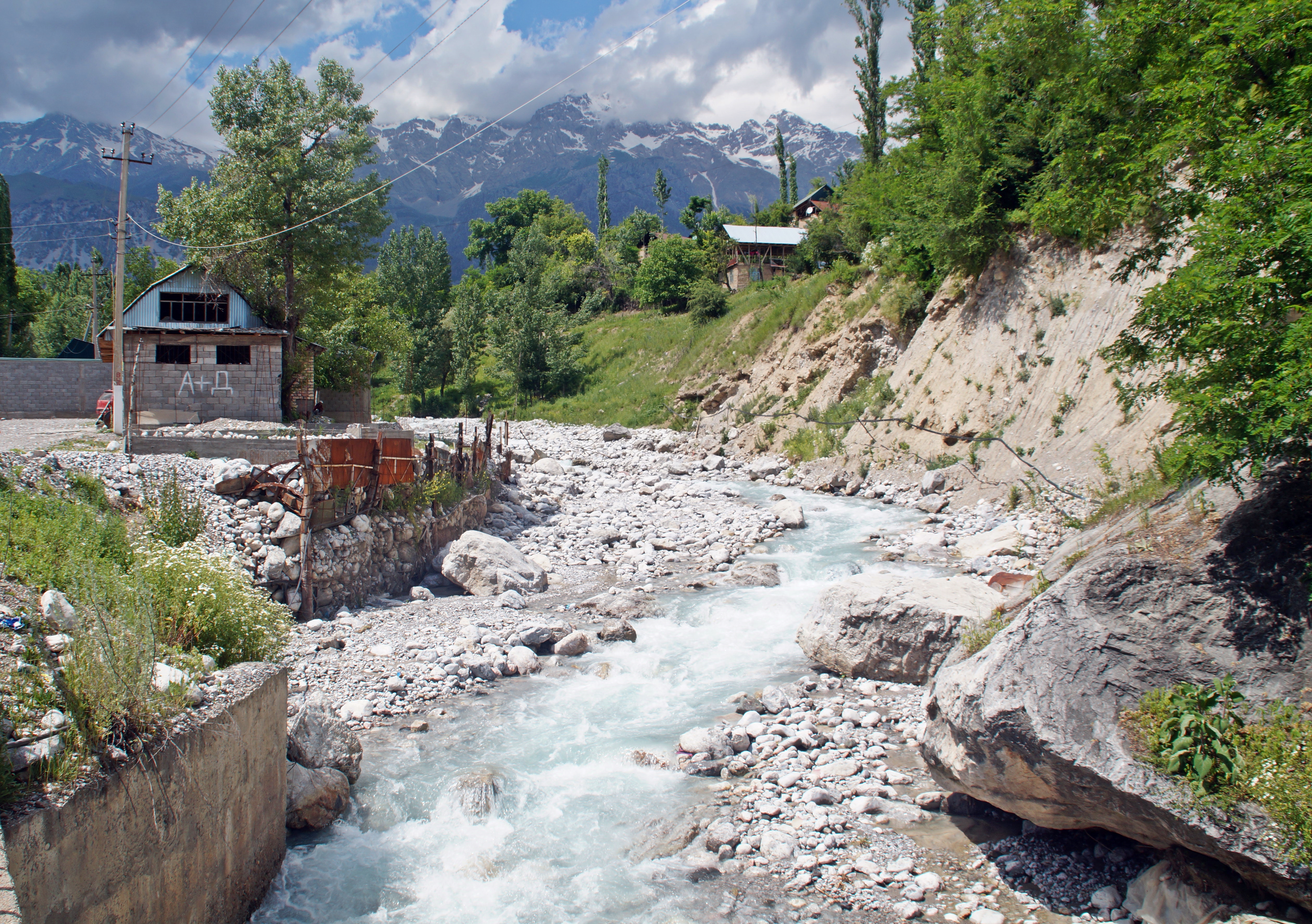
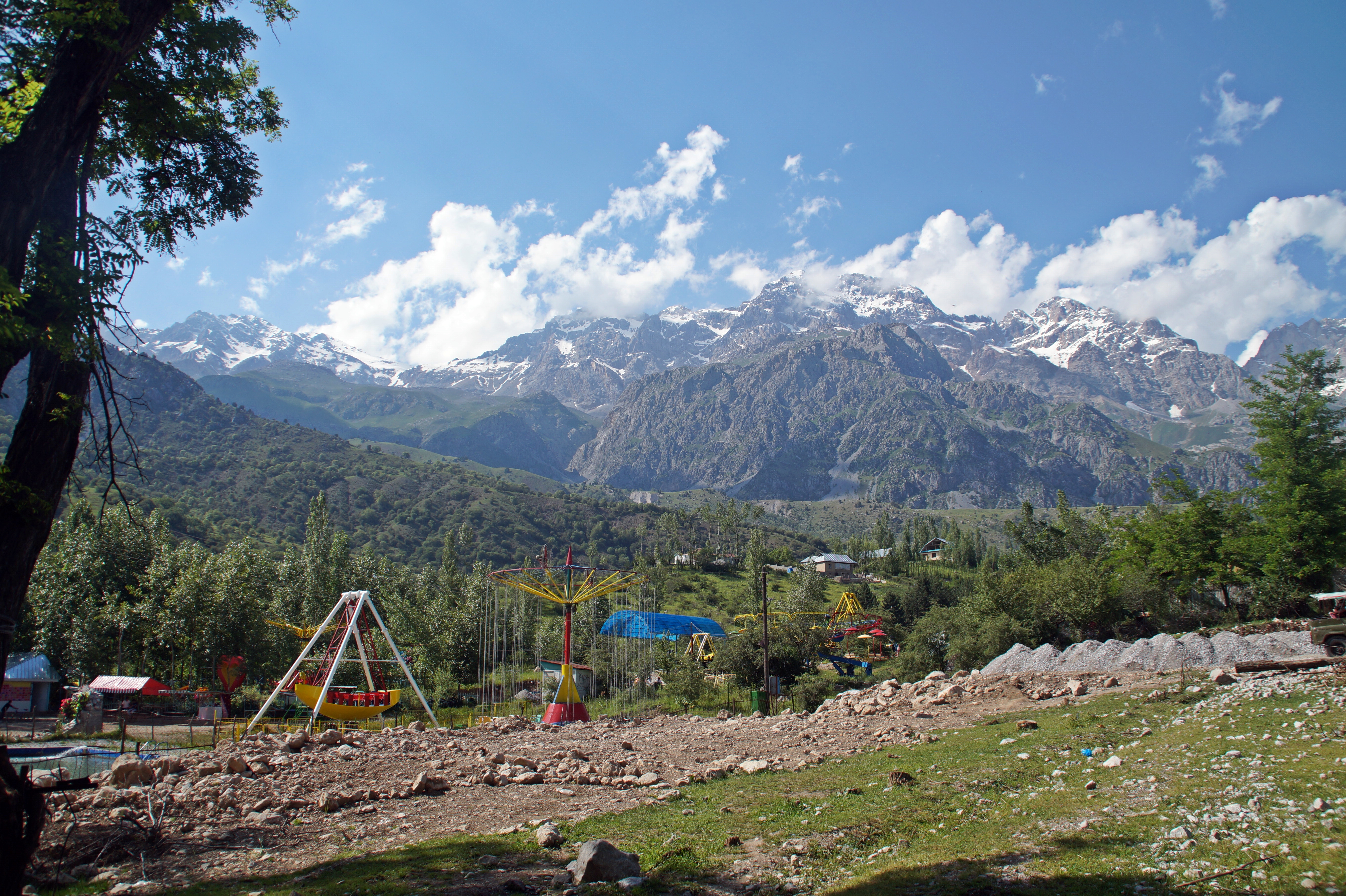
Arslanbob is often called one of the most beautiful villages in Kyrgyzstan, and with good reason. The village is surrounded by tall mountains, has several waterfalls nearby, has a river running through the center and is home to the largest wild walnut forest in the world. The Walnut Forest covers an area of 11,000 hectares and is the perfect place for day hikes or horseback riding.
Arslanbob is an interesting place with a culture that differs from the rest of the country. The village has around 11.500 inhabitants, and more than 95 % of them are Uzbeks.
When we arrived in the center of Arslanbob, there was a guy from the local CBT waiting for us. I guess word travels quickly when two tourists come to town. He told us a bit about the area and set us up with a lovely family at a homestay for three nights.
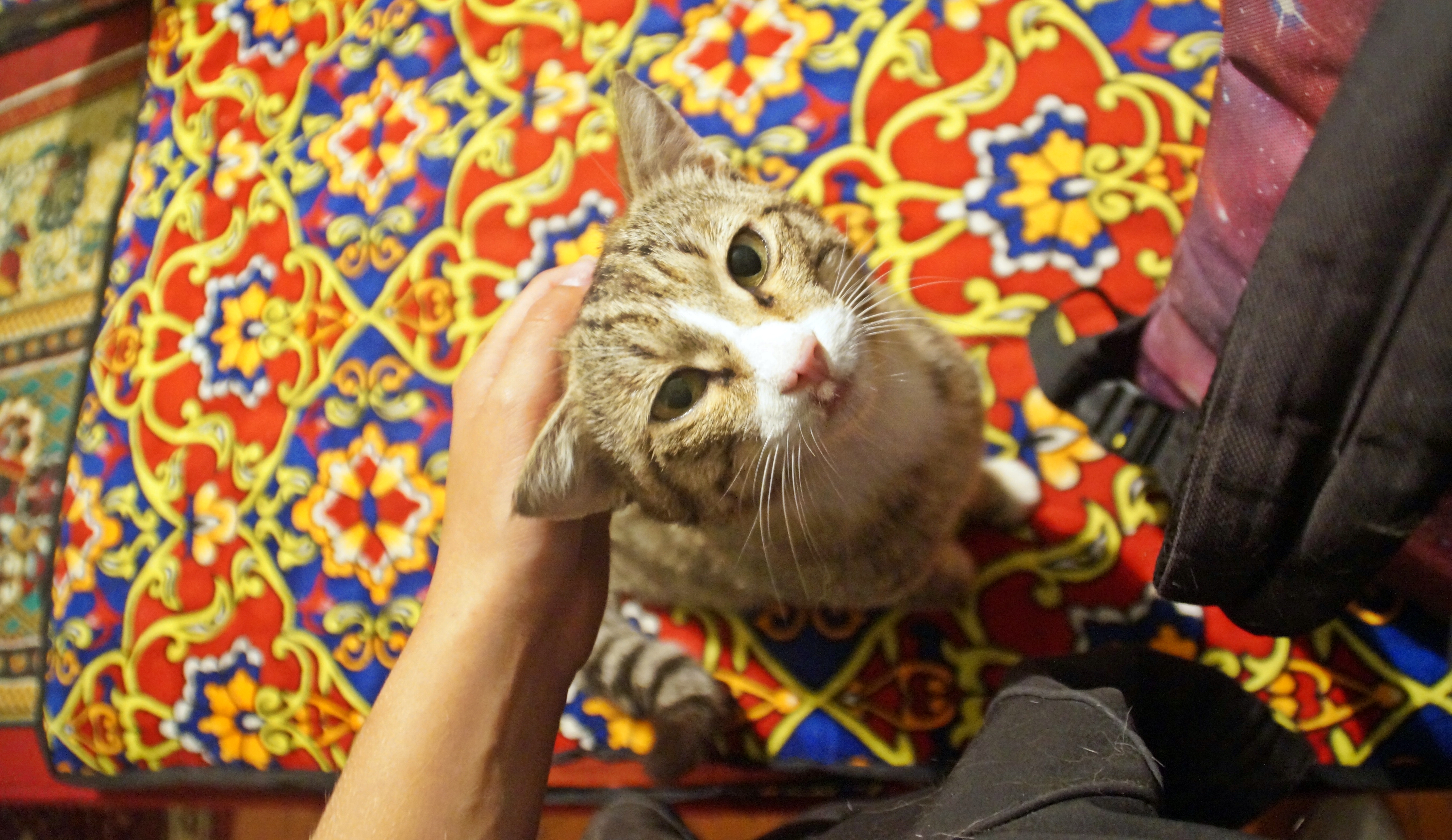
On our first day in Arslanbob, we decided to be a bit lazy and have a sleep-in – something that we hadn’t been able to do for the last few weeks – but when we did eventually get up at 11.30, we decided to be a bit active and spend the day walking to the Big Waterfall, located 8 km. above Arslanbob. There are two waterfalls in Arslanbob, a small one and a big one. The small one is close to the town centre, but the big one is quite a way away. In order to get there, you can either drive or hike for about 4 hours round-trip. We decided to hike to the fall, but initially got lost and ended up at the small waterfall instead! We didn’t stay there for long though, as we knew we were going there the next day on horseback, so we went back and found the right road to the big waterfall.
The hike was uphill the entire way and the last hour was really steep. I was feeling quite sick that day, in fact I had actually had a cold since the beginning of my time in Mongolia (1,5 months earlier!) that hadn’t gone away yet due to the constant change in weather in this area of the earth (or at least I think that’s the reason), but on this day, I was also feeling quite light-headed and walking uphill in 30 degrees celcius and at a high altitude wasn’t exactly helping it. I pushed through and got to the top after much effort, but it was worth it to see the impressive 80 m. tall waterfall. When I got there, I snapped a few pictures, before collapsing on a bench for an hour or so. I didn’t have any strength to get up, but eventually had to, as the sun was about to set.
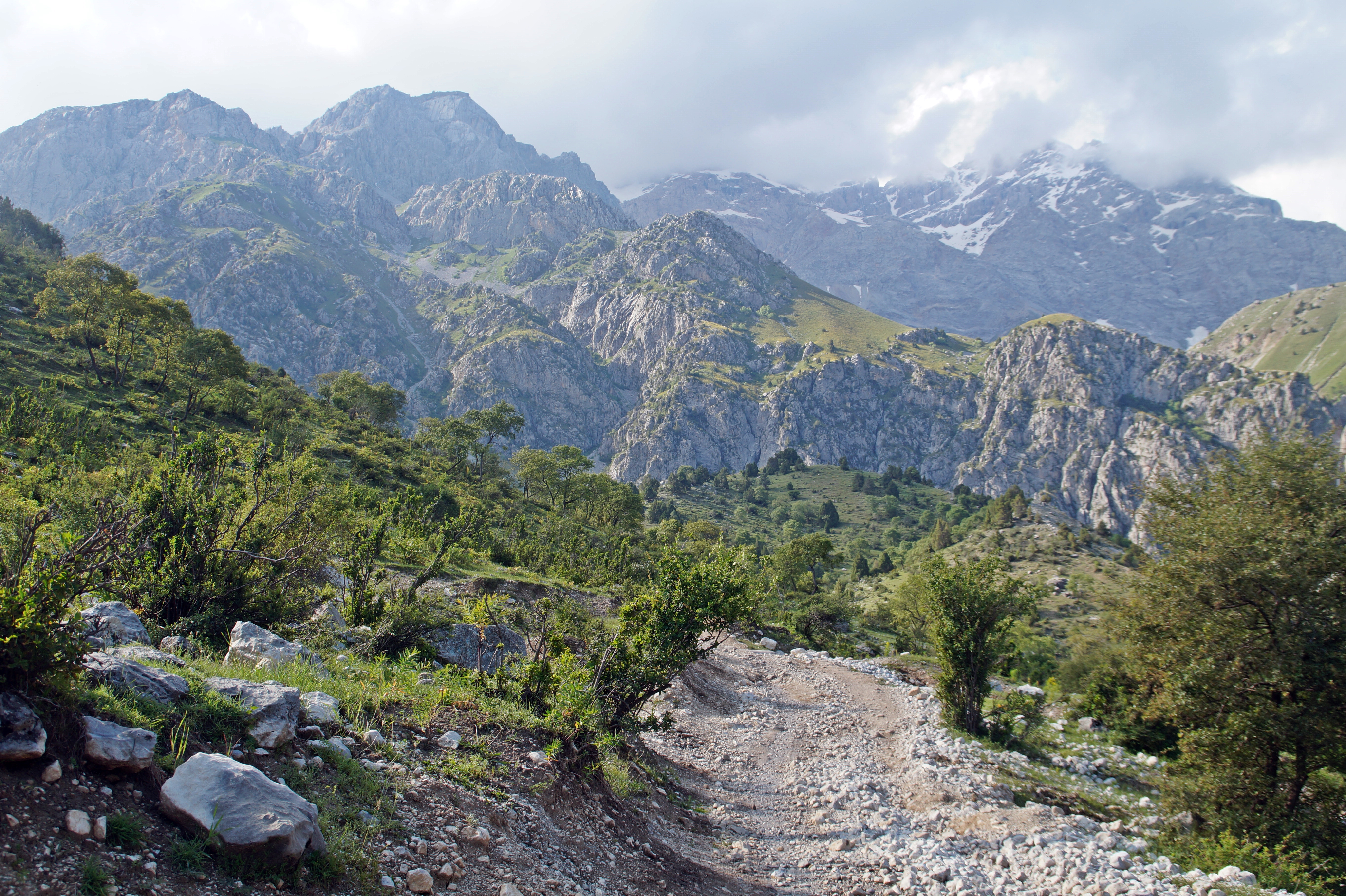
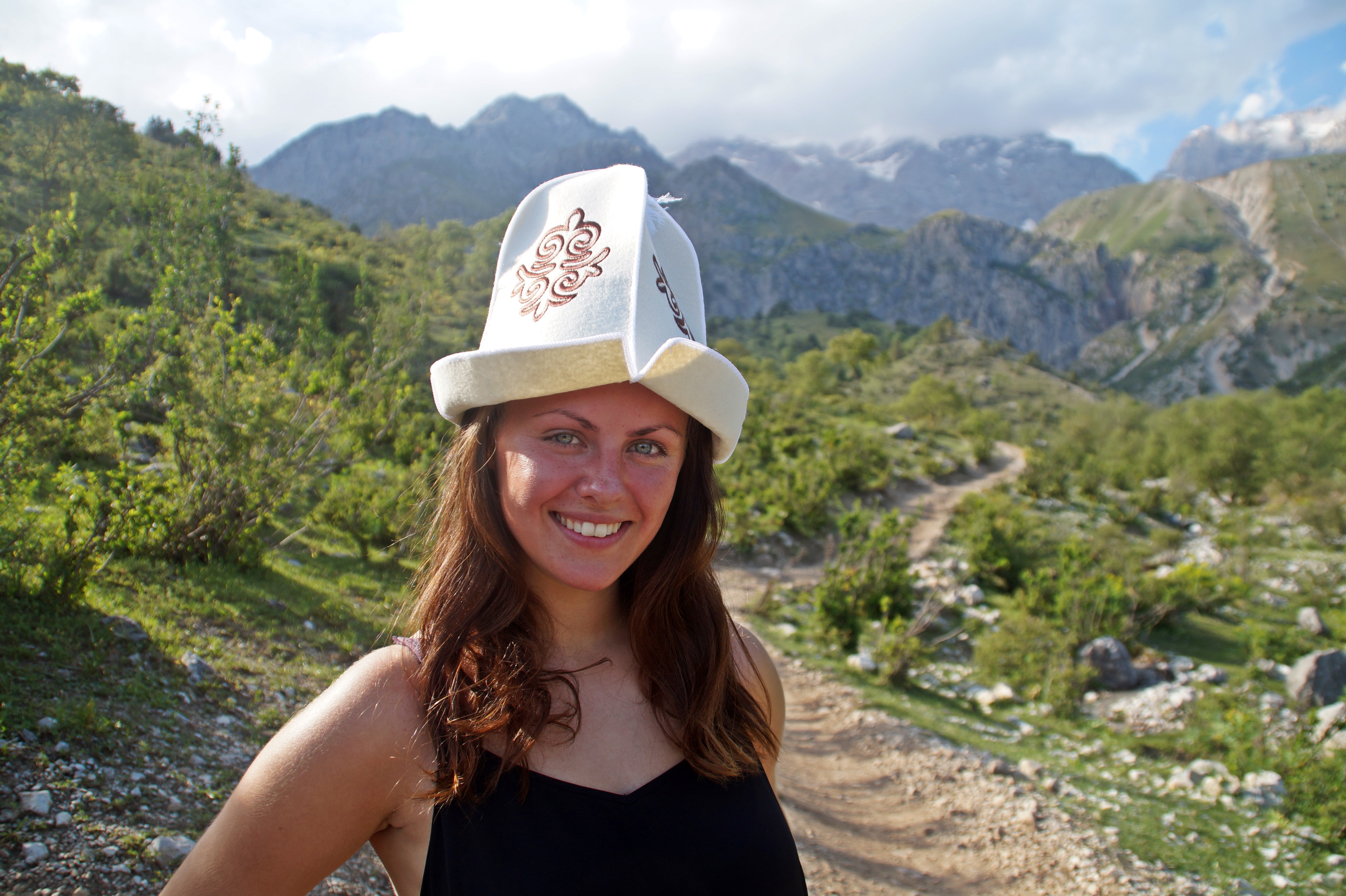
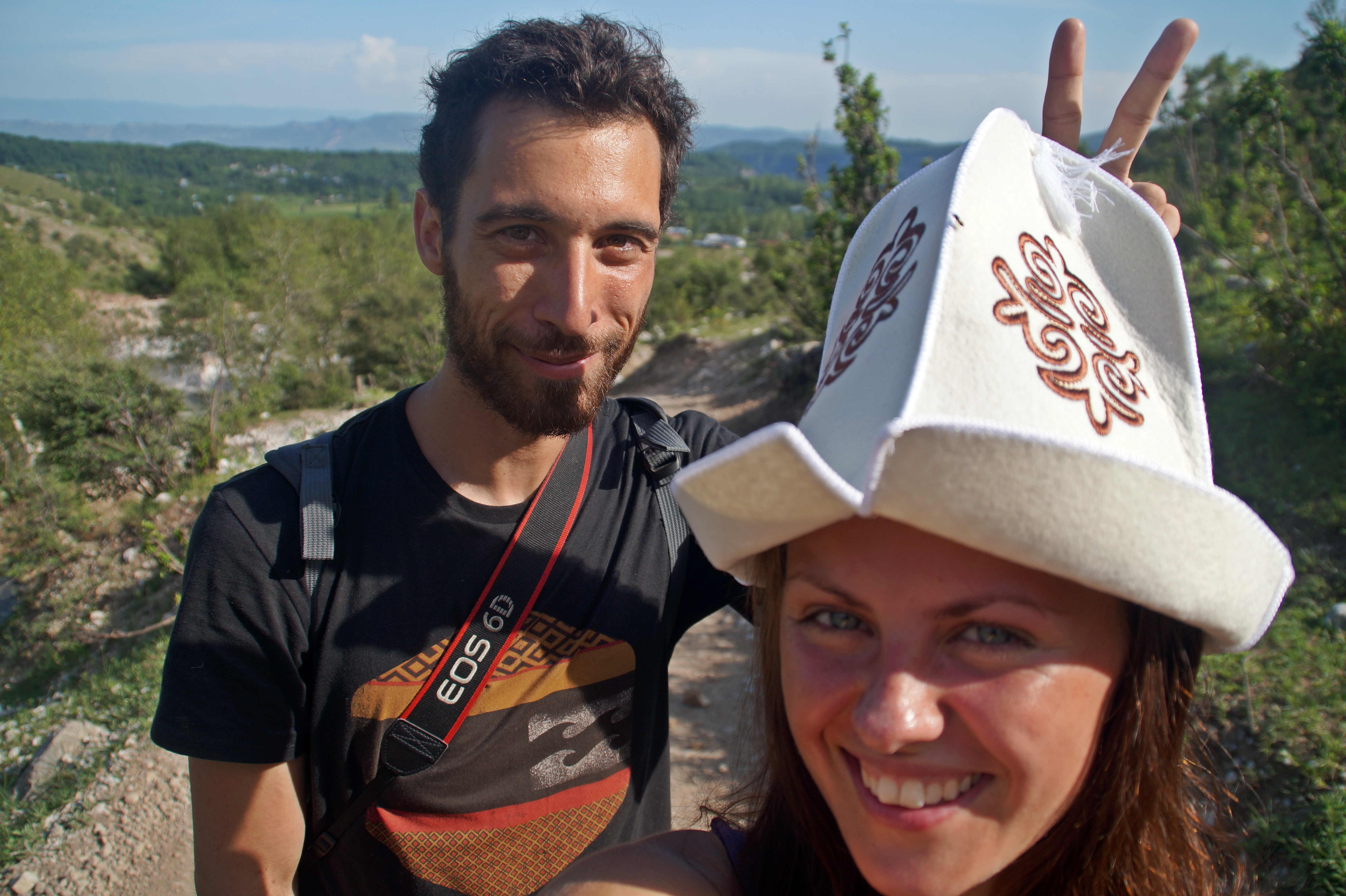
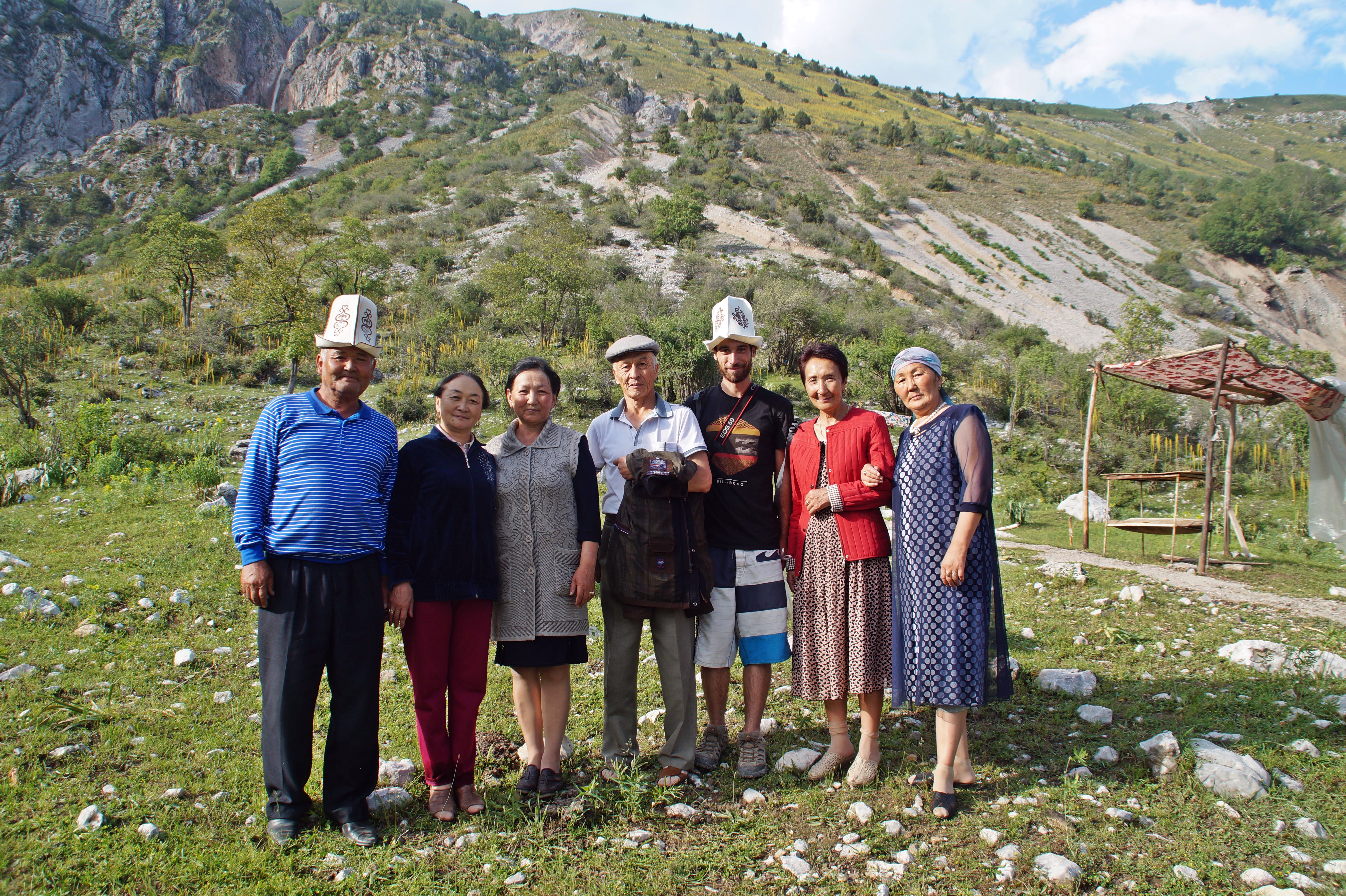
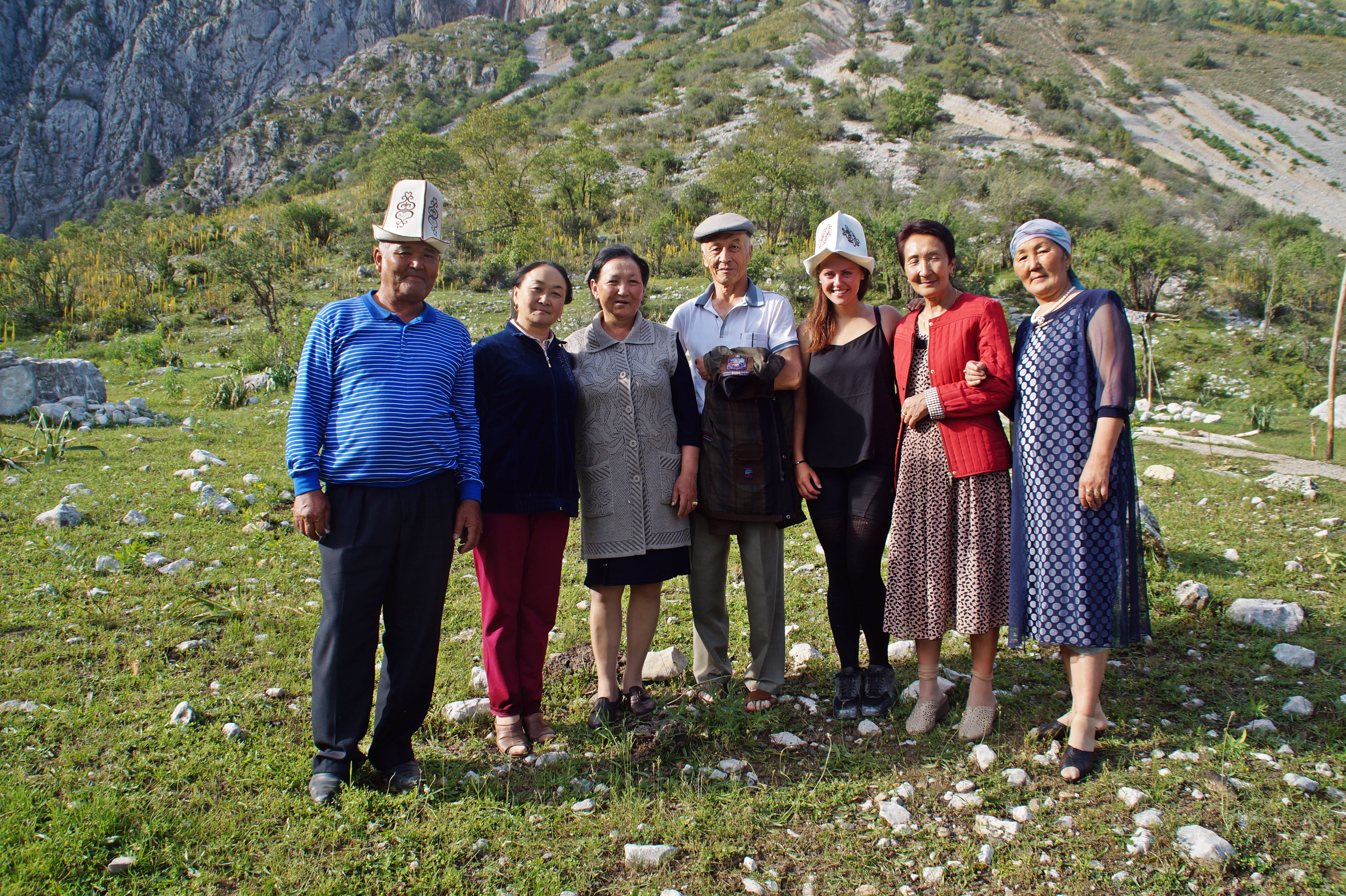
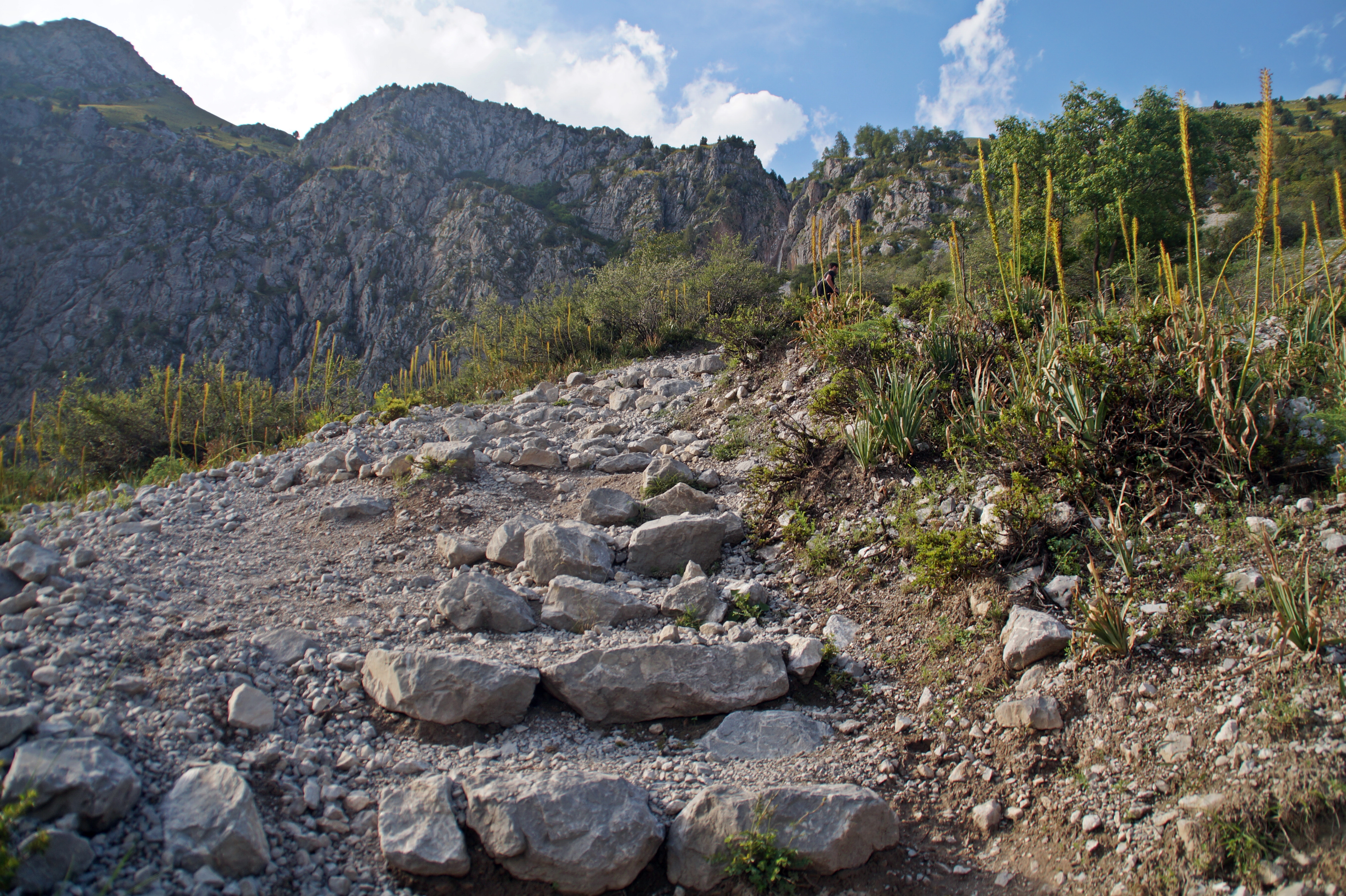

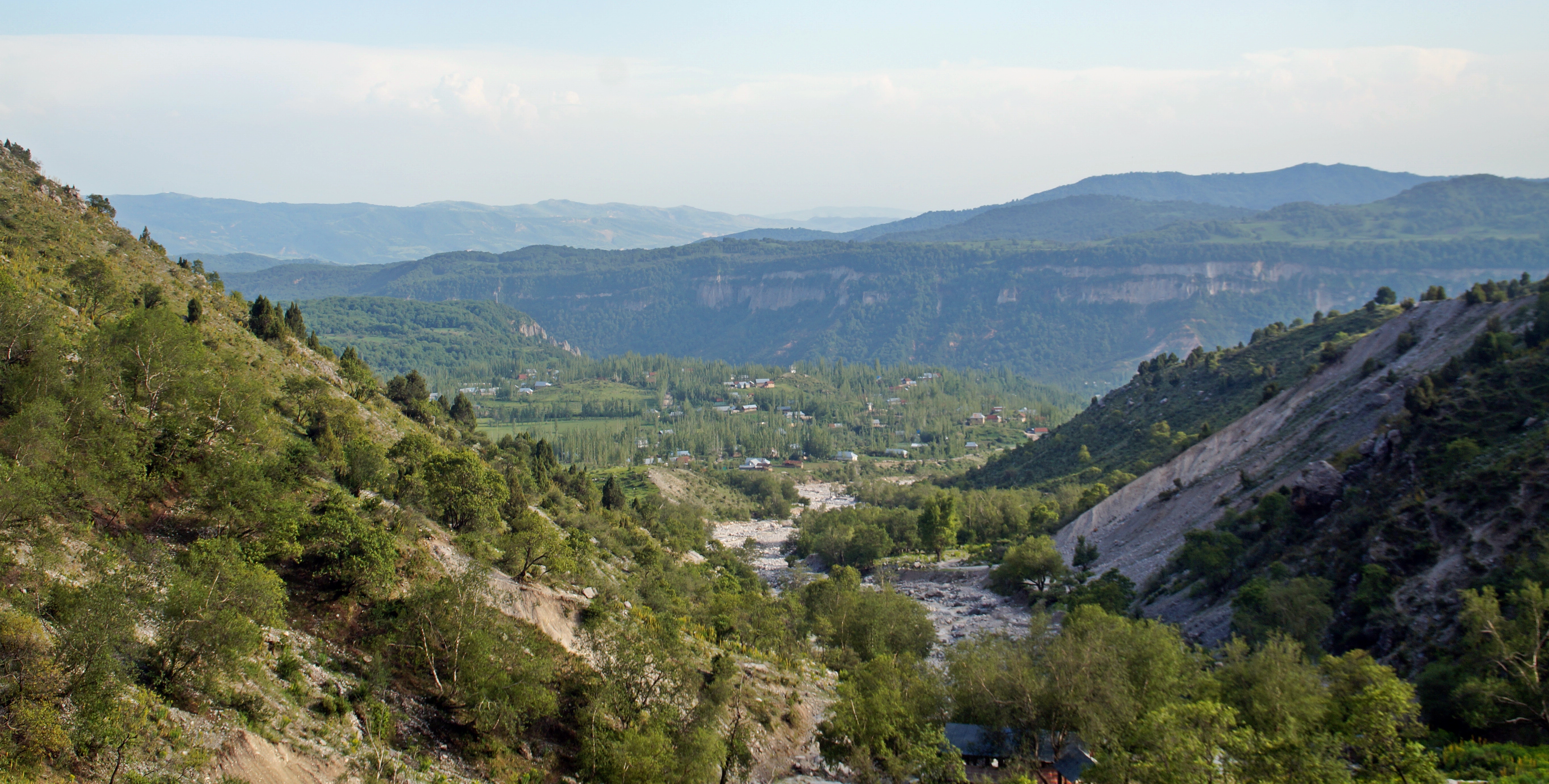
That evening the night sky was spectacular, so just like we did in Afghanistan, we decided to grab this unique opportunity to capture the Milky Way over the beautiful village.
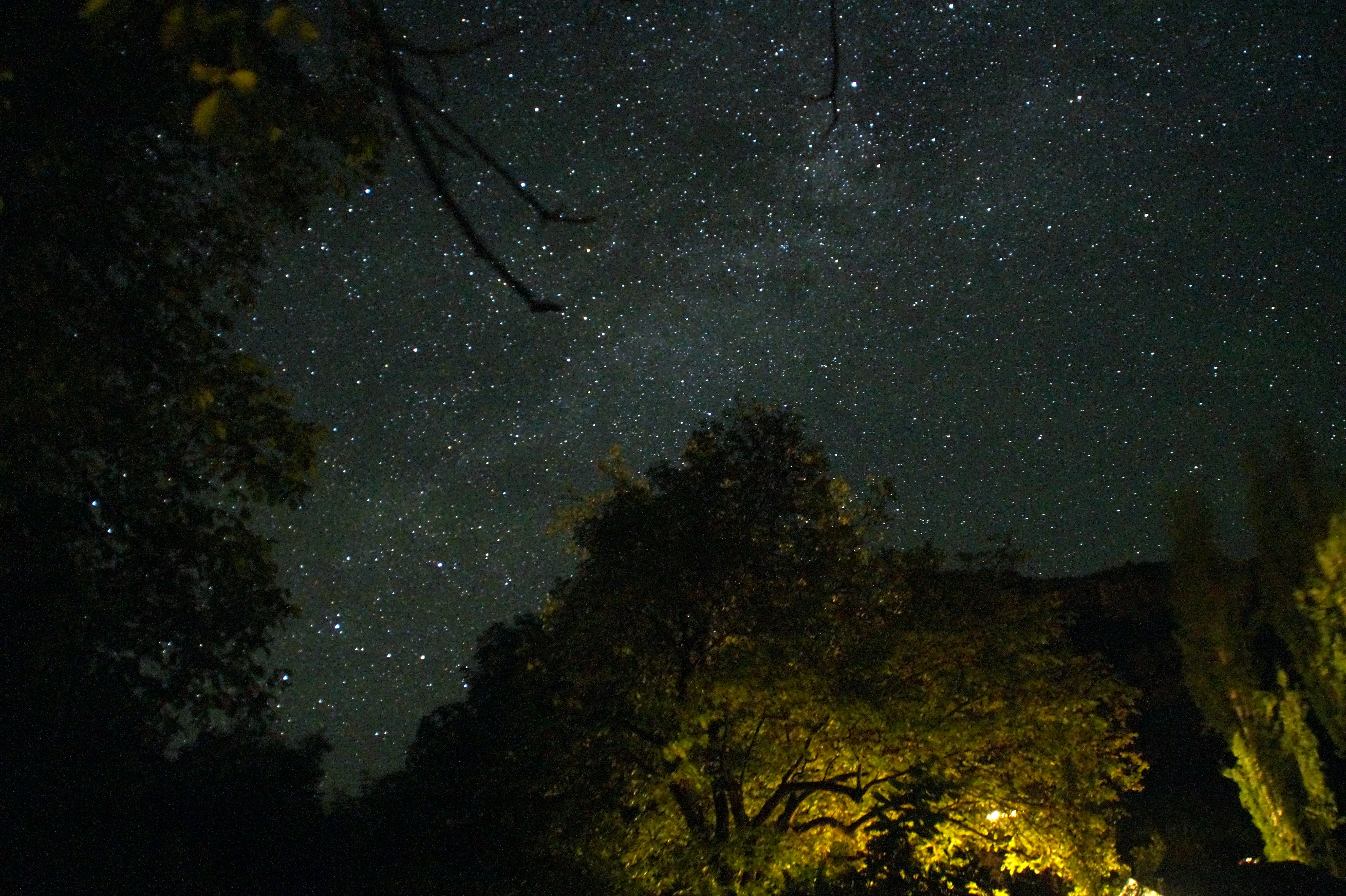
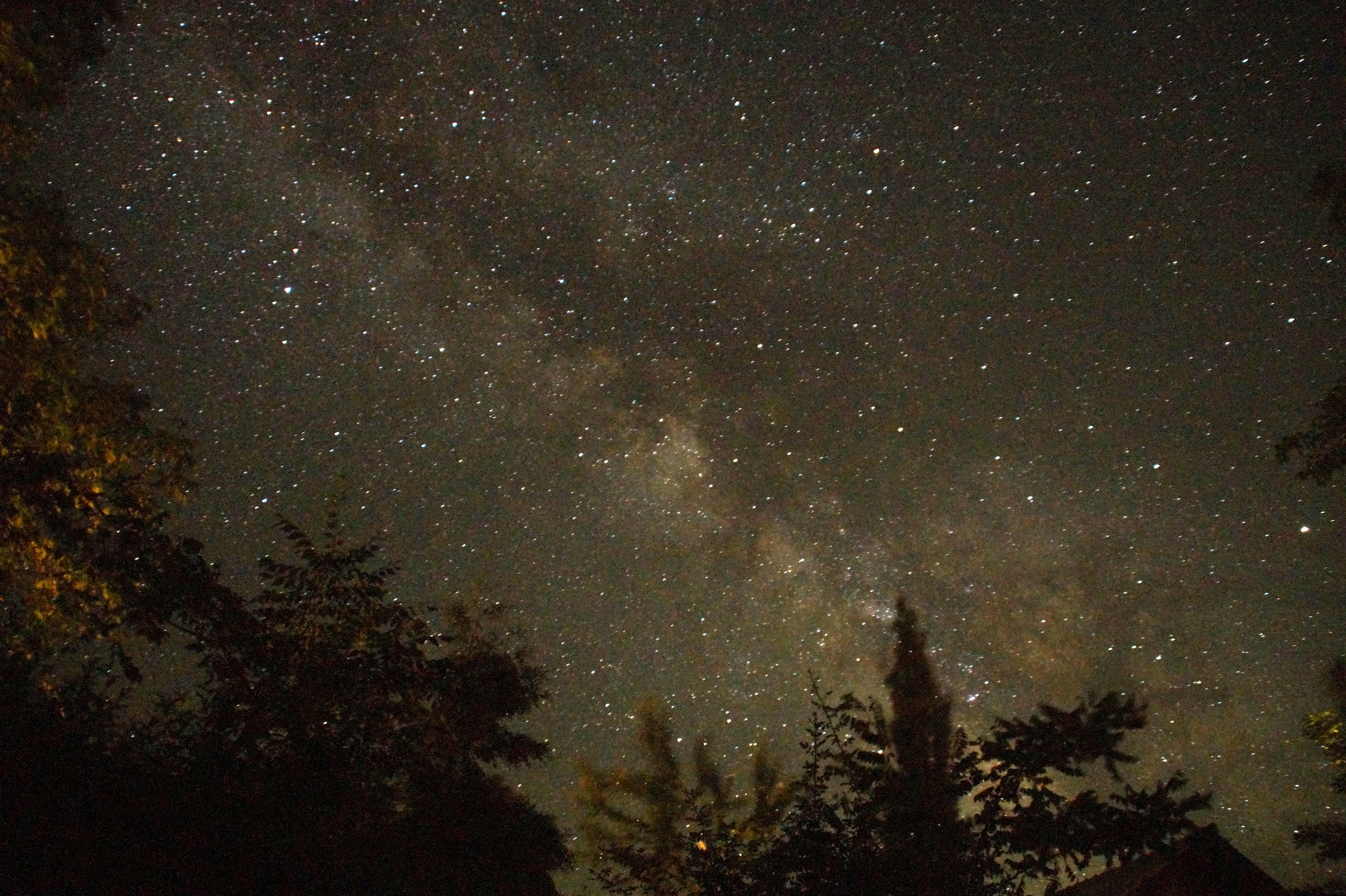
On our second and last full day in Arslanbob, we decided to rent horses to take us around to the rest of the must-see sights in the area: The Small Waterfall, the Panorama and the Walnut Forest. Our guide picked us up at our homestay at 10 AM along with the three horses and a little boy, who had been ordered by his father, who owned one of the horses, to follow it throughout the day. I felt really bad for him, especially because he was following the Ramadan, which had only just started, so he wasn’t allowed any water or food until sunset (which was at 9 PM), and we had to trek 13 km.
We started by going to the Small Waterfall, which we had accidently already seen the day before, although we didn’t explore it properly. We had all the time we wanted to take pictures of the waterfall, explore the nearby cave and shop at the stalls along the trail to the fall. It’s a nice waterfall, but the whole set-up is very touristy, so we were happy to be leaving and going into the Walnut Forest afterwards.
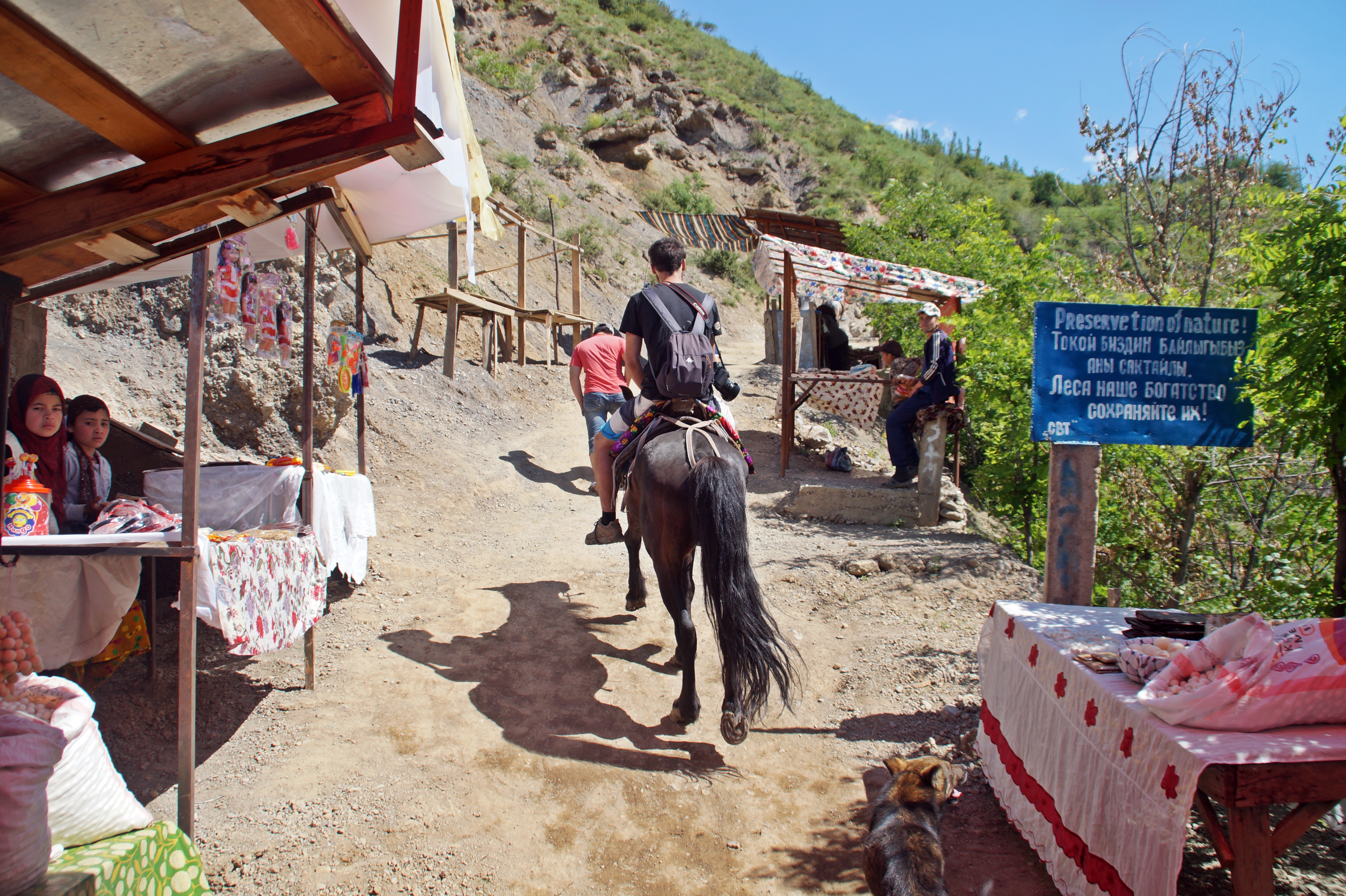

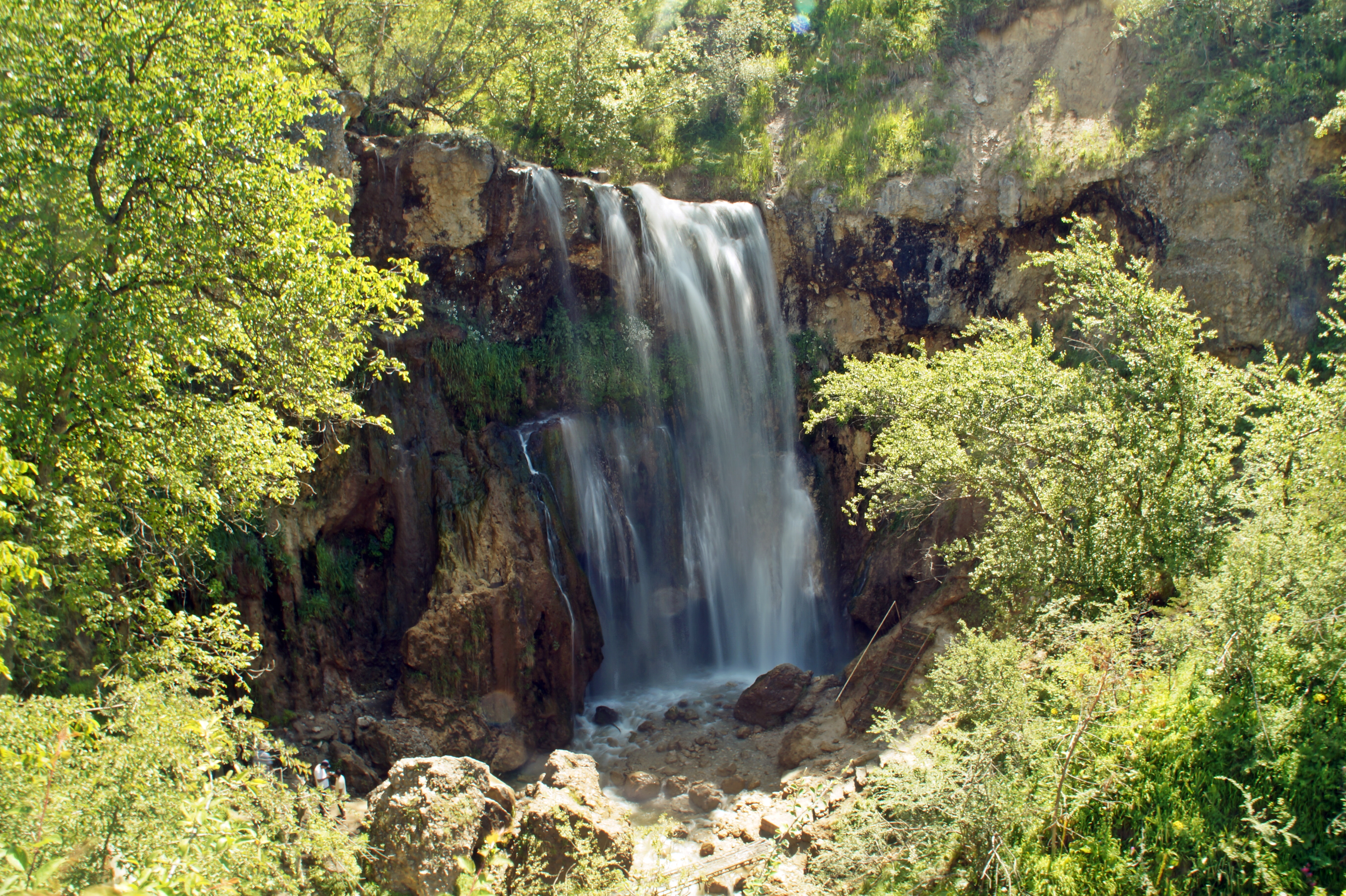
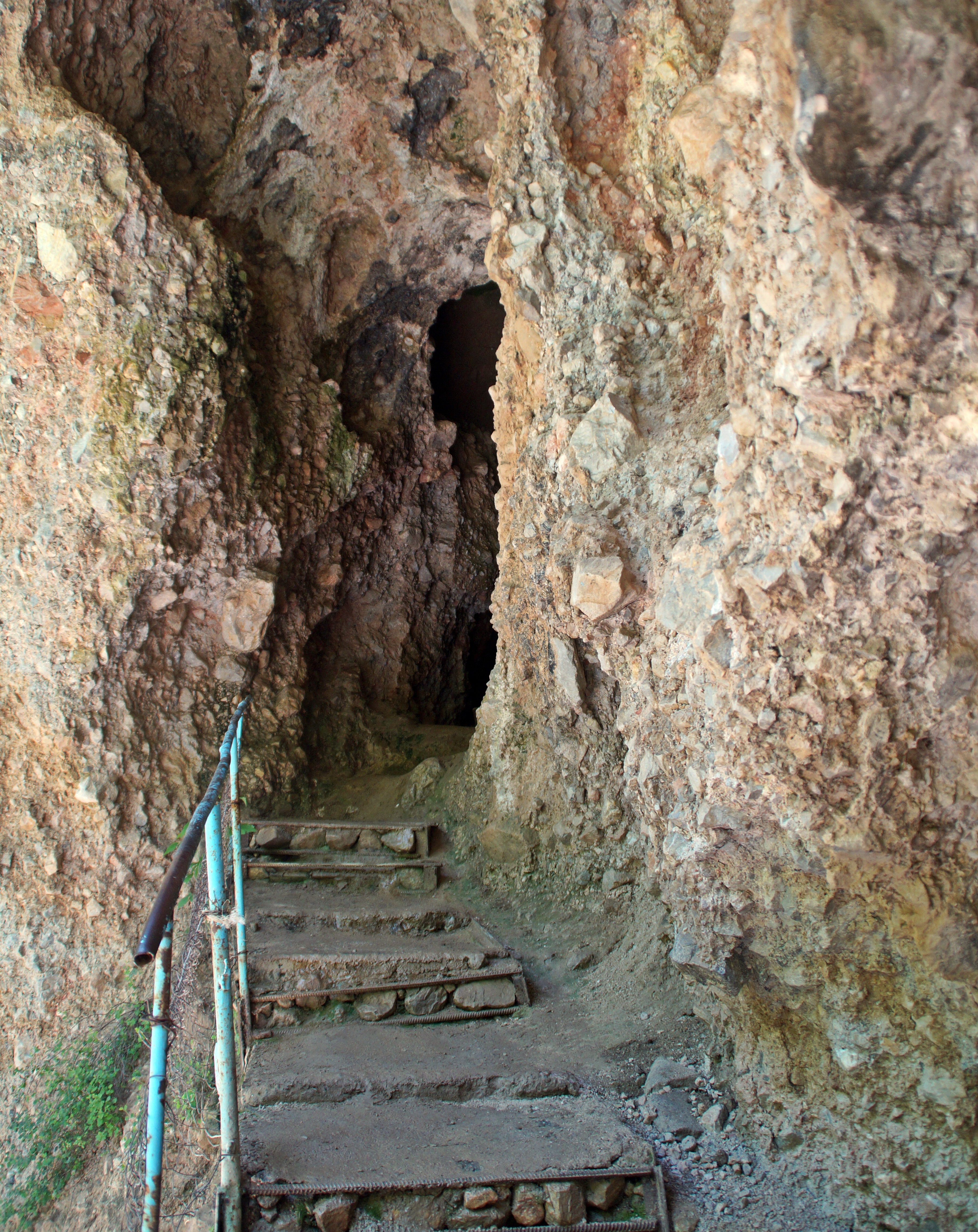
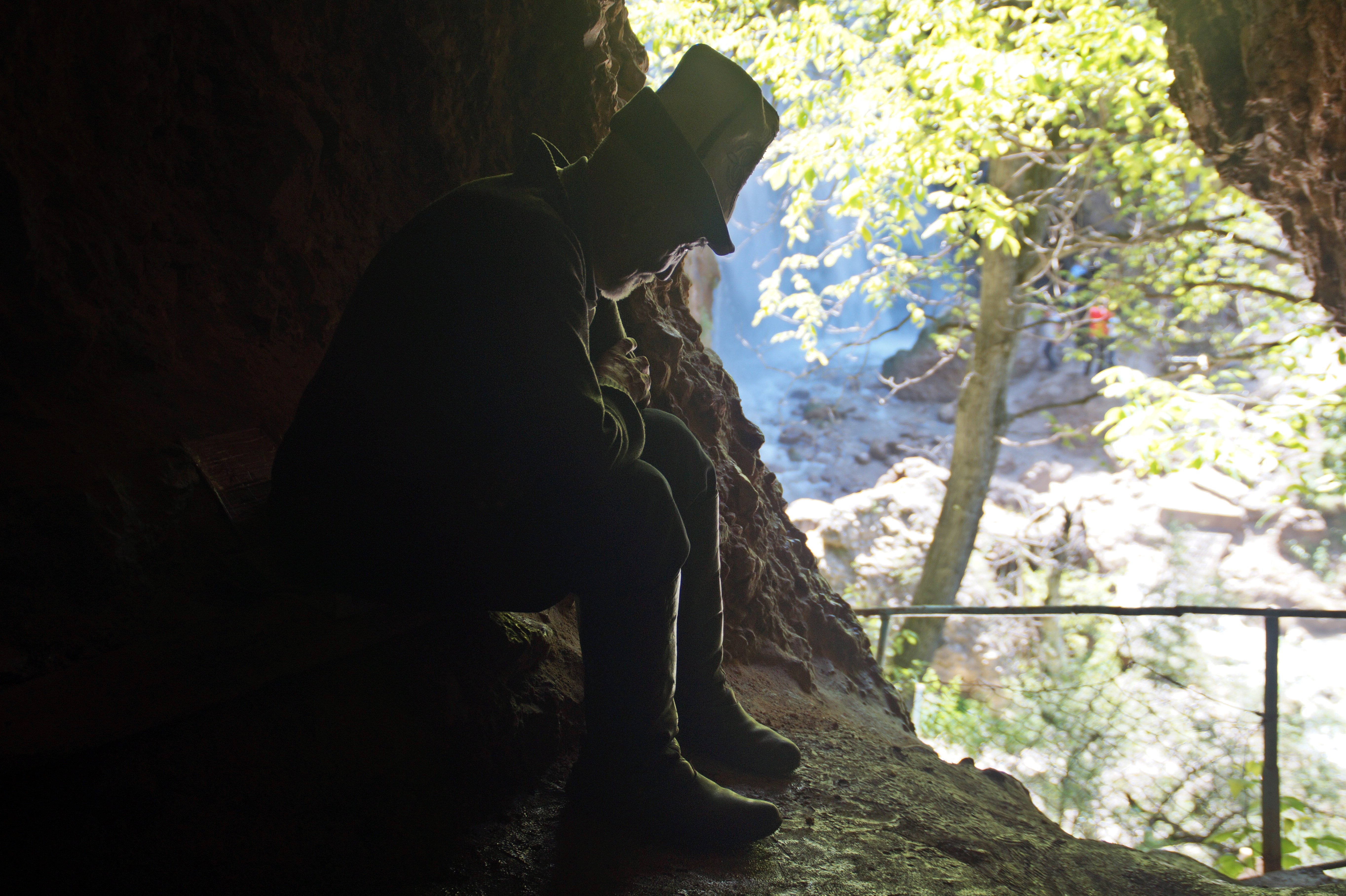
The Walnut Forest was one of my favourite places in all of Kyrgyzstan, probably mainly because it reminded me of the forests that we have back in Denmark, which I love hanging out in. We spent a few hours trekking through the lush forest and had a picnic surrounded by walnut trees. Unfortunately, we couldn’t try any walnuts, as they weren’t yet ripe. Steve and I hadn’t had time to buy any food apart from snacks, which was the last thing I felt like after 3 hours on a horse in the scorching sun. Luckily, our guide decided to share his food when he saw our sad excuse for food, so we had a lovely lunch consisting of fresh vegetables, fruits and delicious flatbread.

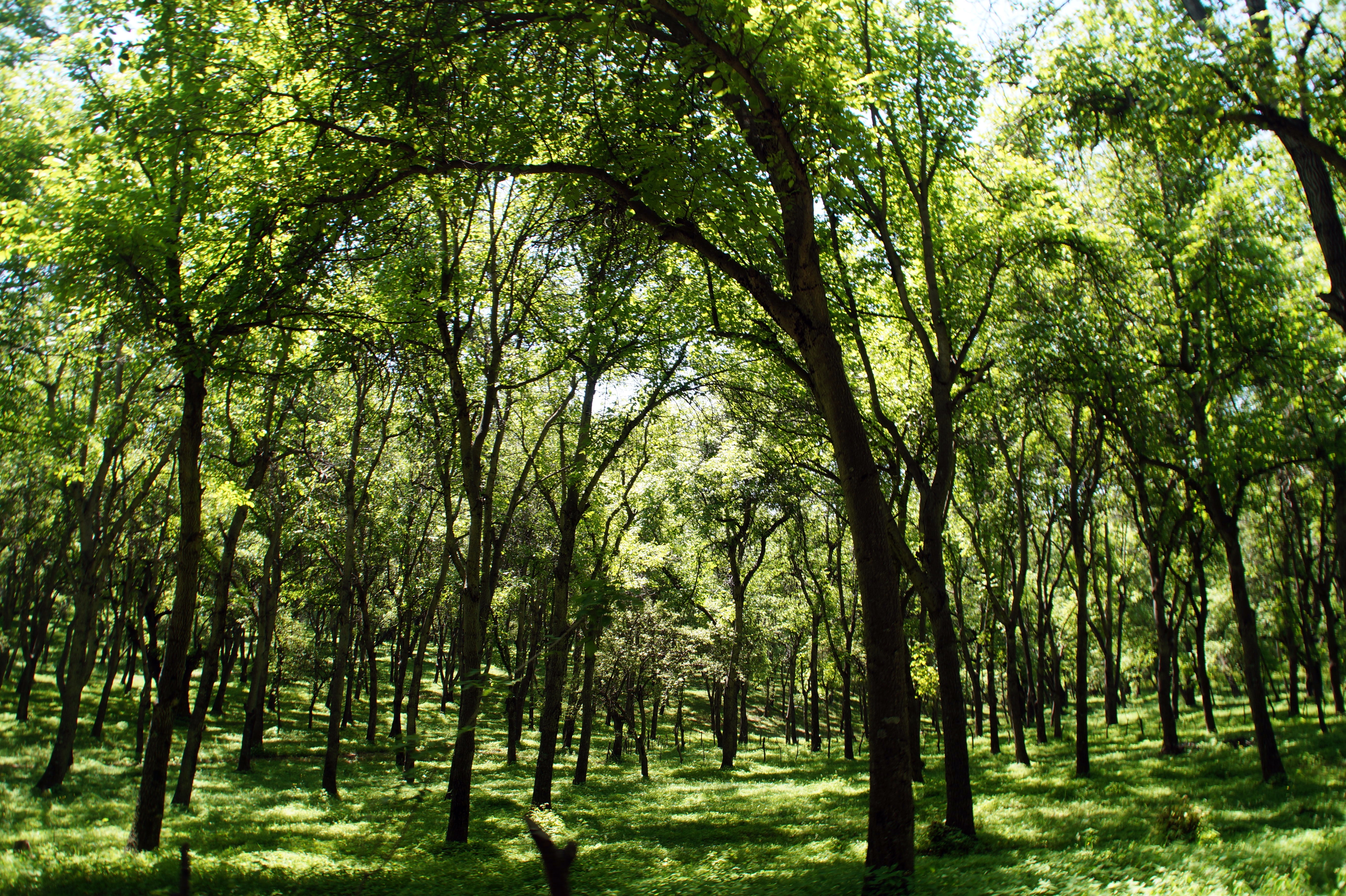
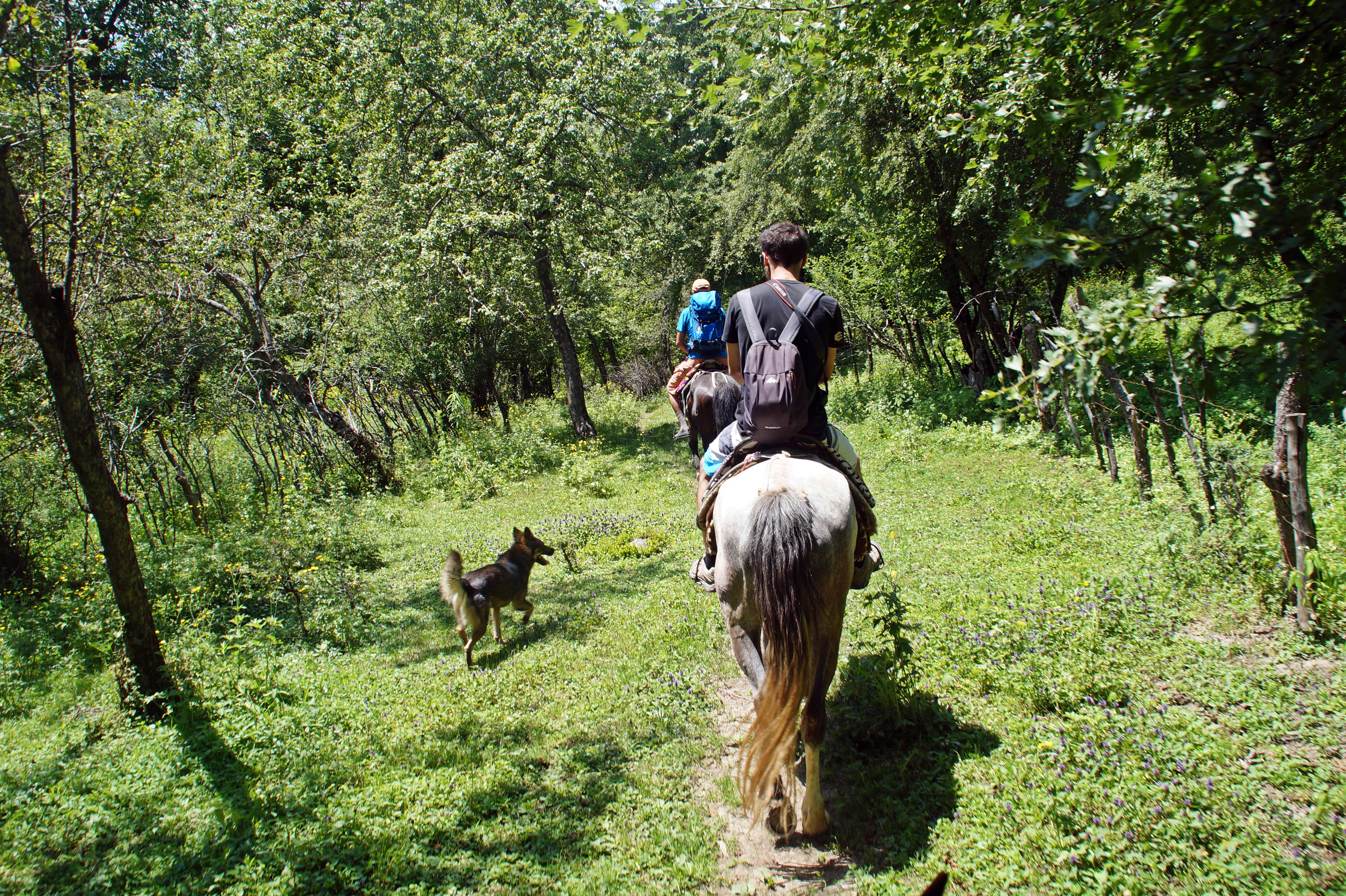
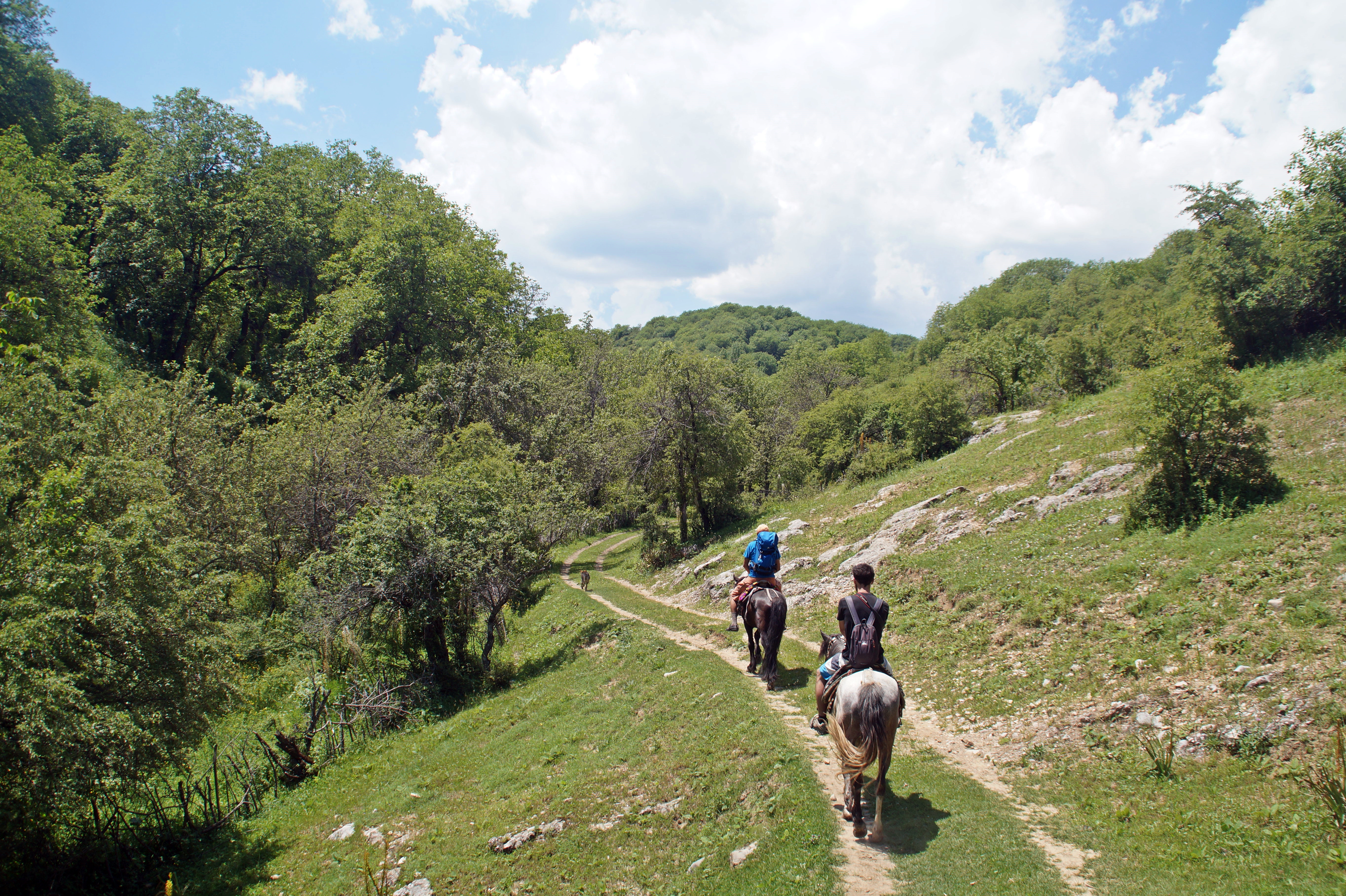


Our last stop for the day was located just as we got outside the forest; The Panorama, as it’s locally called, is a small green field on the side of a mountain, which offers a stunning view of Arslanbob and the surrounding areas. It’s also an awesome place to camp, which is definitely something I’ll consider for the next time I’m in Arslanbob.
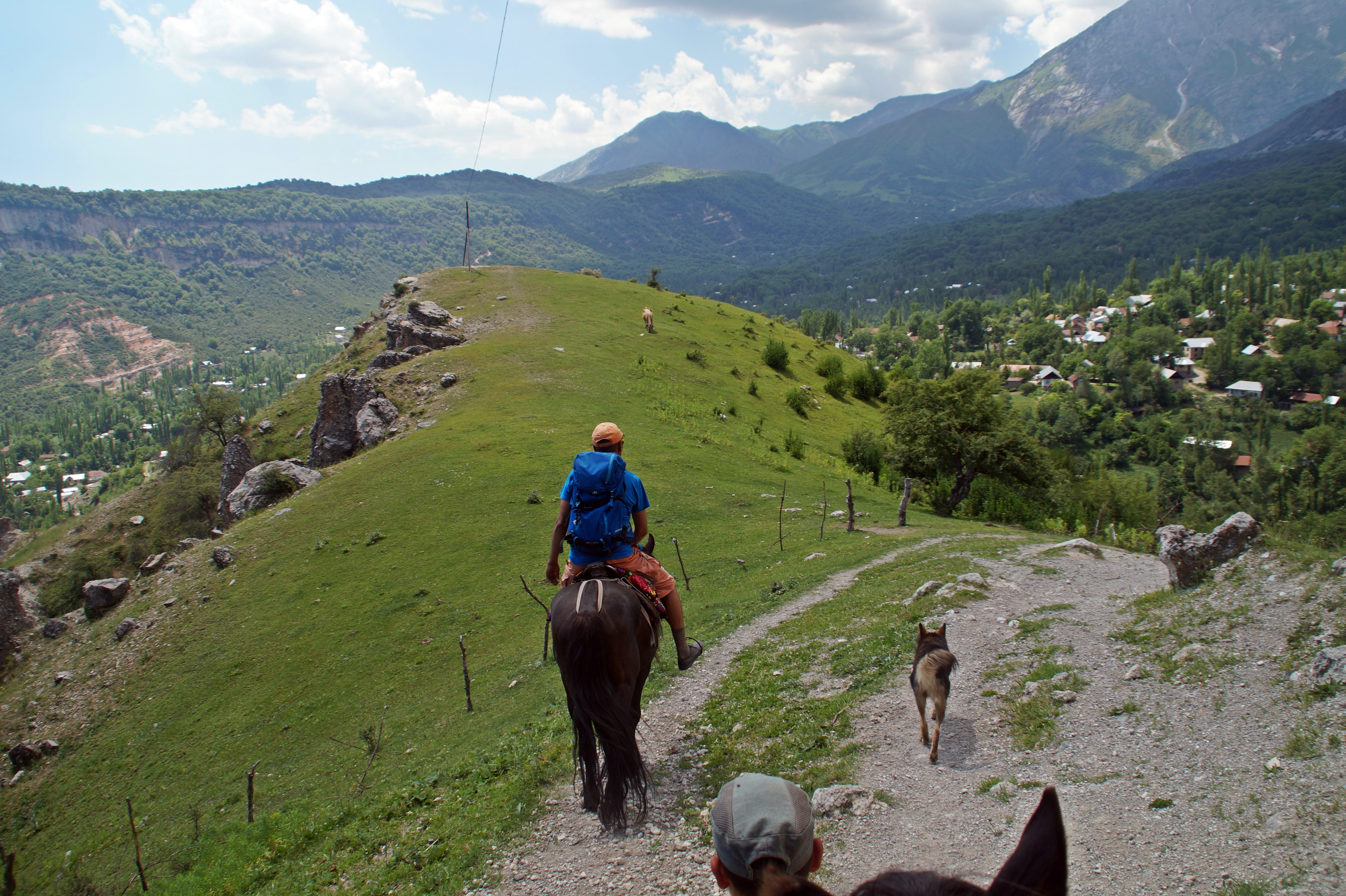
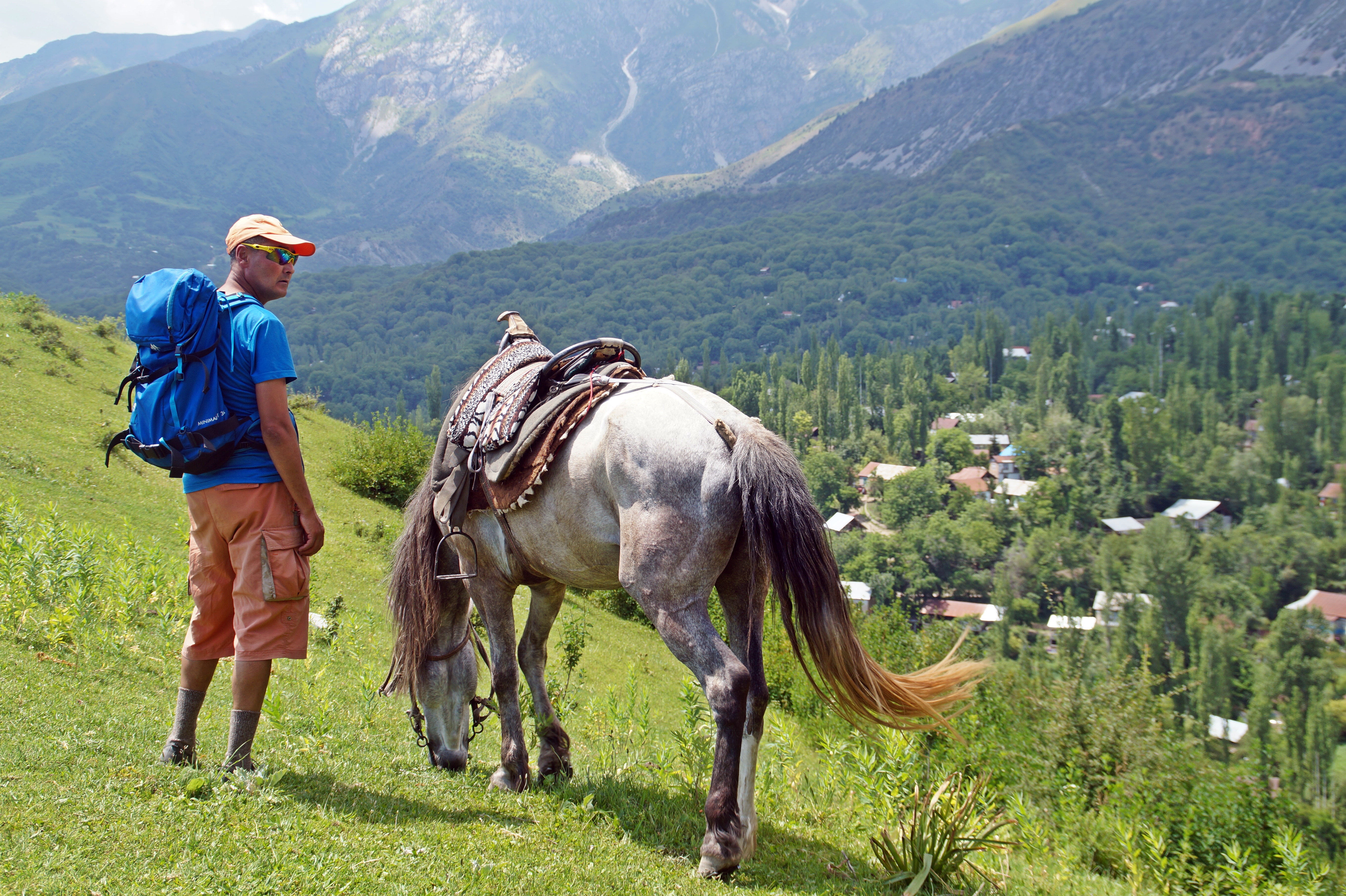
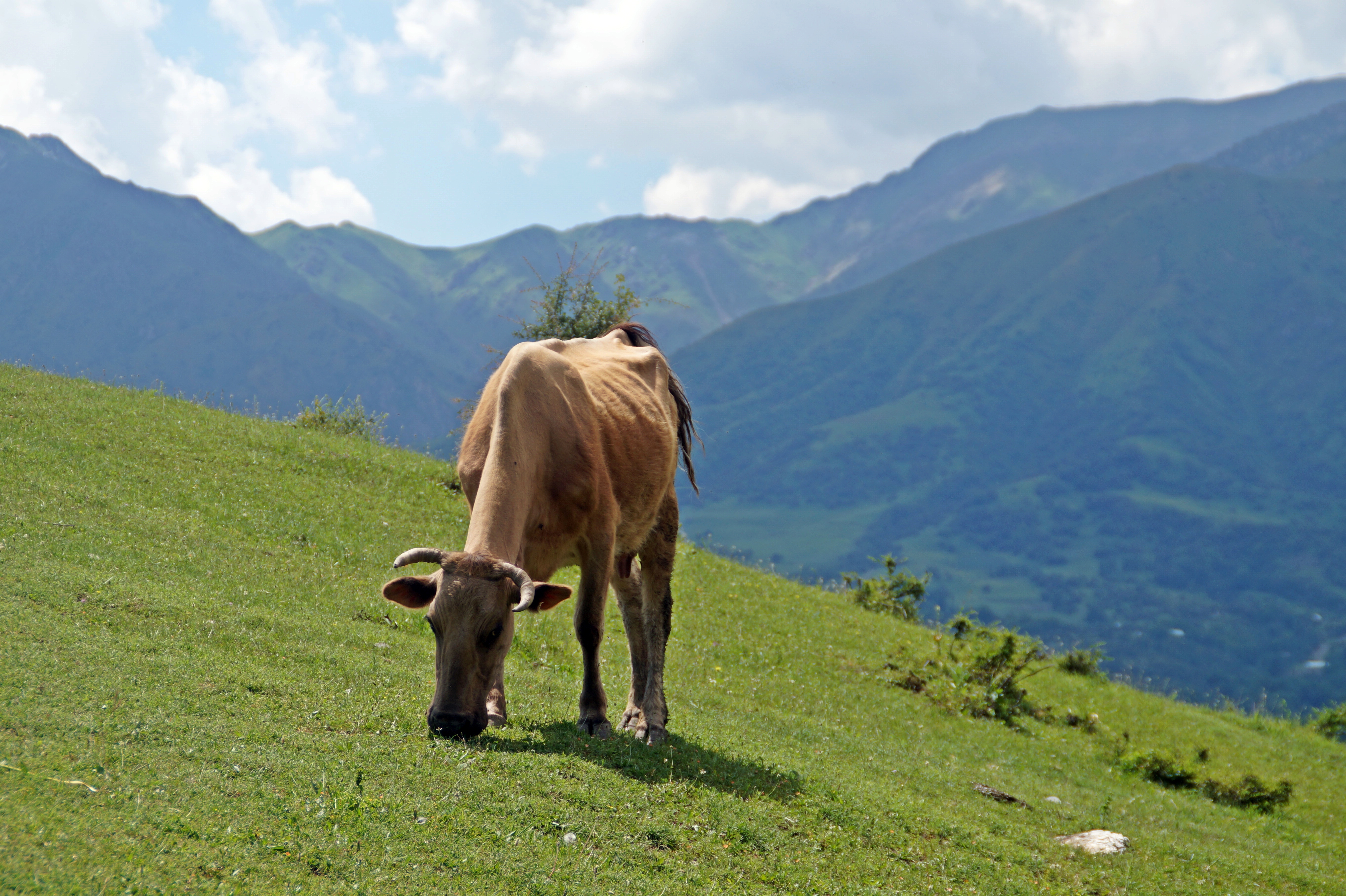

The Panorama is a great picture stop, but it’s not the only place in the area to offer great views. Just 5 minutes before we arrived there, our guide stopped so we could take pictures on a bunch of rocks on the side of the mountain, where the view was equally as stunning.
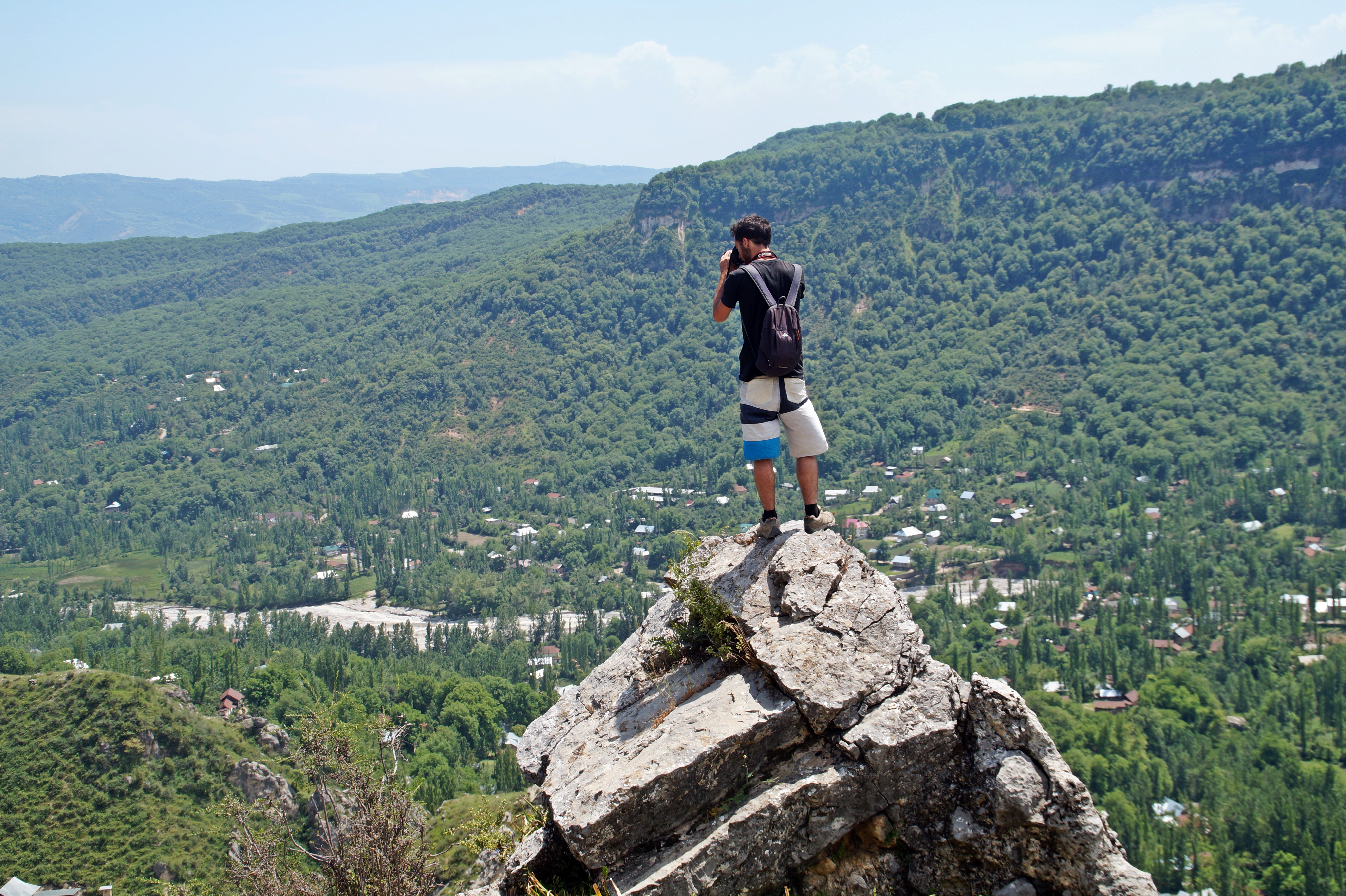

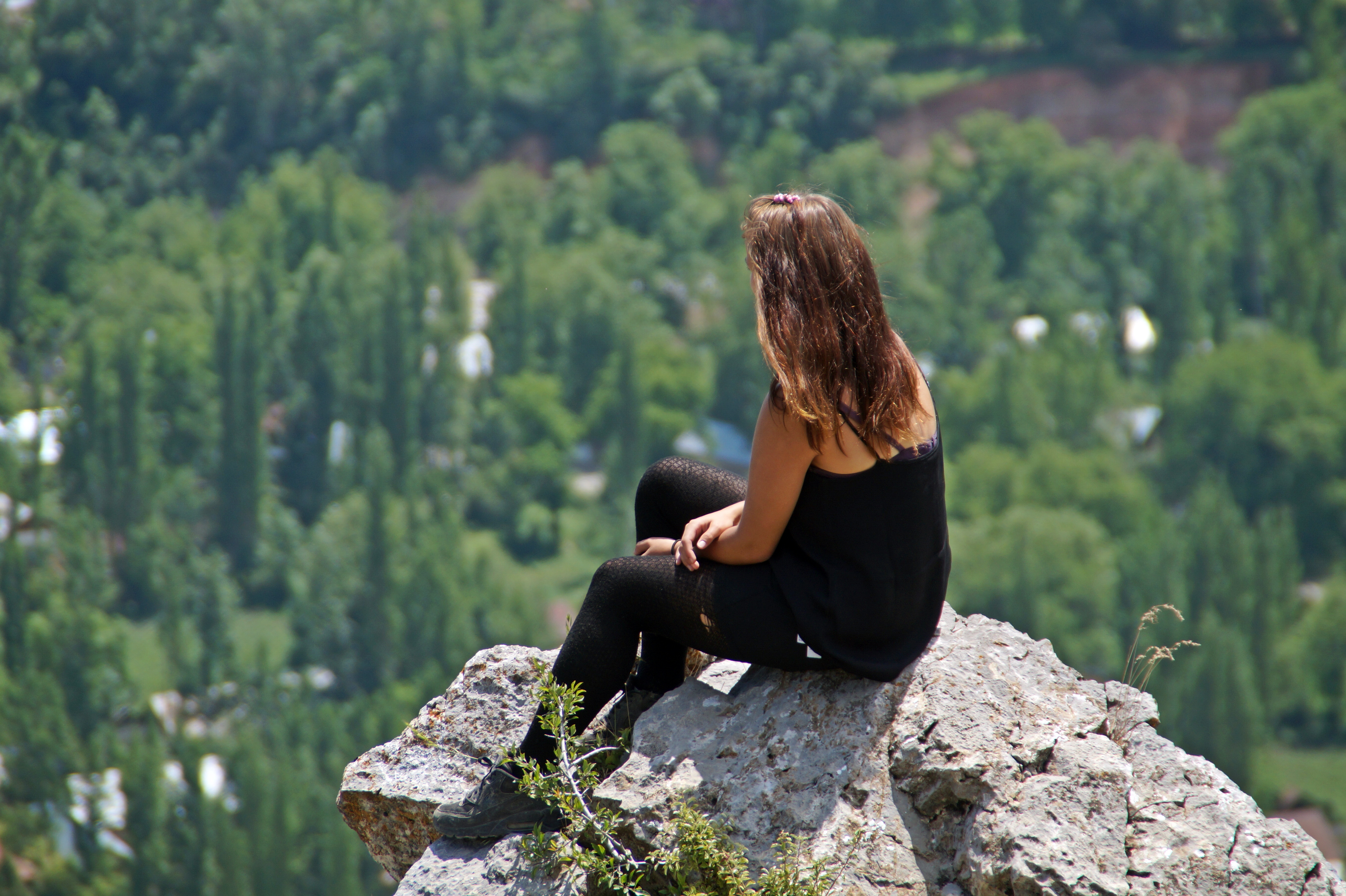
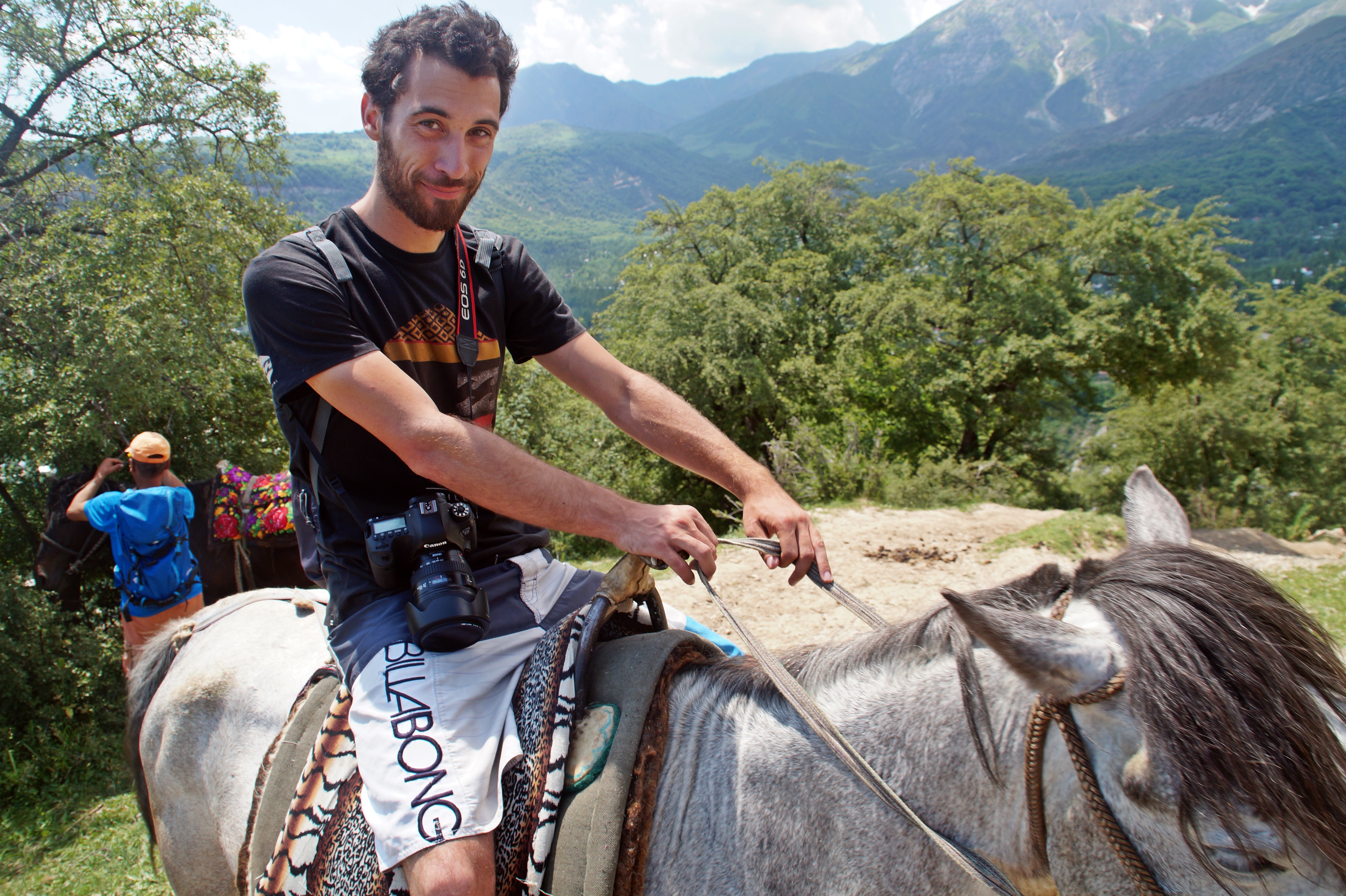
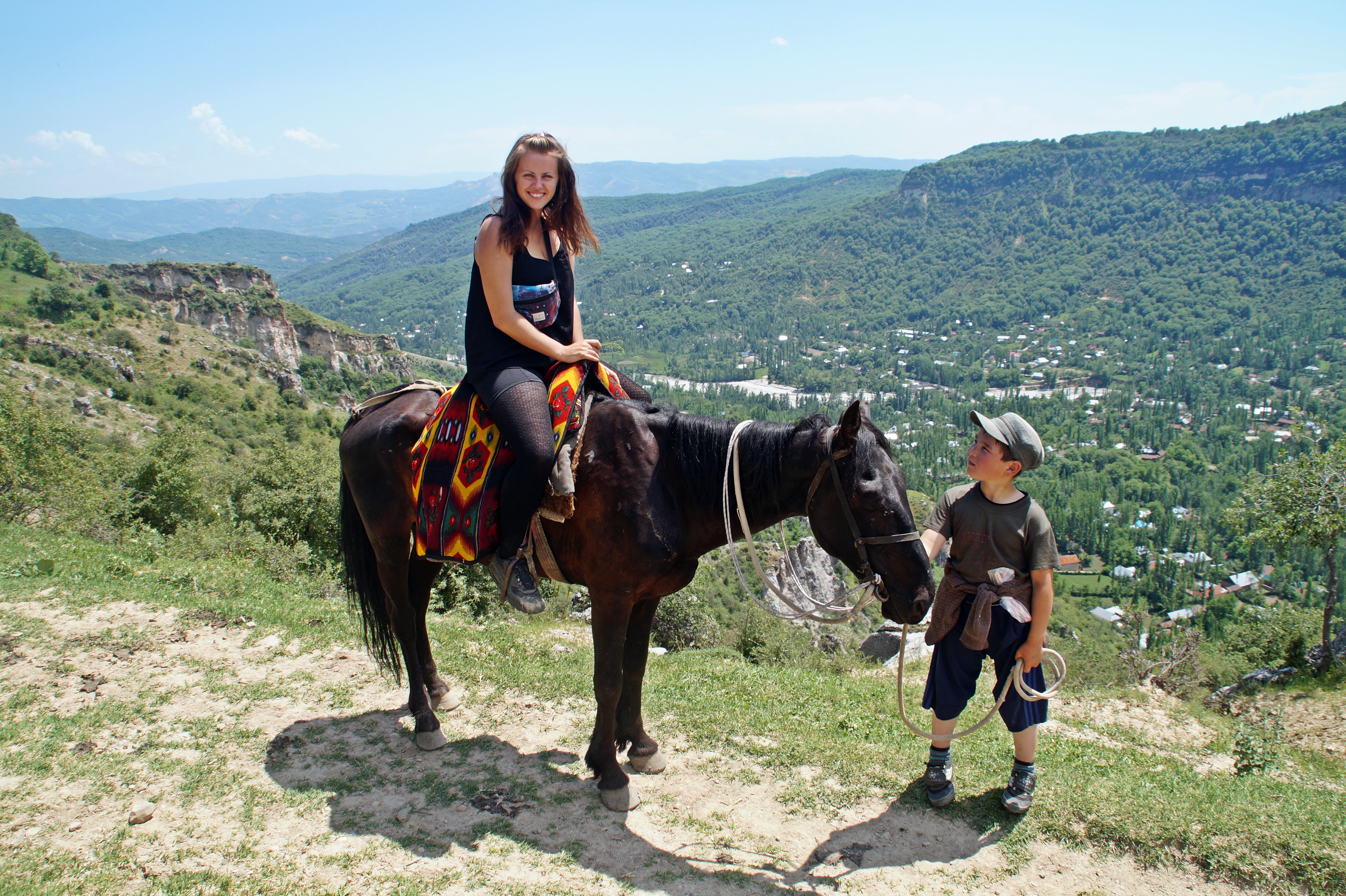
We spent the last evening in Arslanbob eating local fruits and bread, playing cards and committing our first ever crime… Stay tuned for that story!
Travelling to and in Arslanbob
How to get from Osh to Arslanbob:
- You can catch a share taxi from Osh to Jalal-Abad for 200 soms per person, which takes 1,5 hours. A marshrutka costs 120 soms and takes a little longer. There was about half an hours waiting time for us to fill the taxi, but we left before the marshrutka, so that would’ve taken even longer.
- Catch a share taxi from Jalal-Abad to Bazar-Korgon for 150 soms per person, which takes about 35 minutes. We didn’t see a marshrutka going to Bazar-Korgon, but there probably would be one.
- Catch a share taxi from Bazar-Korgon to Arslanbob for 100 soms per person, which takes about an hour. There are marshrutkas going for 50 soms per person, but they would take quite a bit longer, as the road is quite bad.
How to get from Arslanbob to Bishkek:
- You can catch a marshrutka from the center of Arslanbob to Bazar-Korgon for 50 soms per person or, if you can find one, a share taxi for about 100 soms per person. It takes about 1,5 hours for the marshrutka and 1 hour for the share taxi.
- From Bazar-Korgon, there are plenty of share taxis going to Bishkek, but you may have to wait a long time to find other passengers, as the driver won’t leave until the car is full. We waited for 3 hours until we were finally on the road for an 8-hour drive. The cost is 900-1000 soms per person.
Directions to the Big Waterfall:
- From the CBT office in the center of Arslanbob, go straight and ignore the first “waterfall” sign – this is for the small waterfall (walk straight still, to the left of the sign). At the second “waterfall” sign, follow the sign and when you see a sign saying “Preserve the environment” at an intersection, turn right.
- You’ll soon be able to see the waterfall and can decide whether to take the trail up the hill or around the hill, both leading you to lookout points.
Horse trekking in Arslanbob:
- Book through the CBT in the center of Arslanbob. It’s easily done the night before at the latest. We paid 3.600 soms for two people including the guide and three horses for a 5-hour tour. If you’re one person, it should cost around 2.800 soms for the guide and two horses.
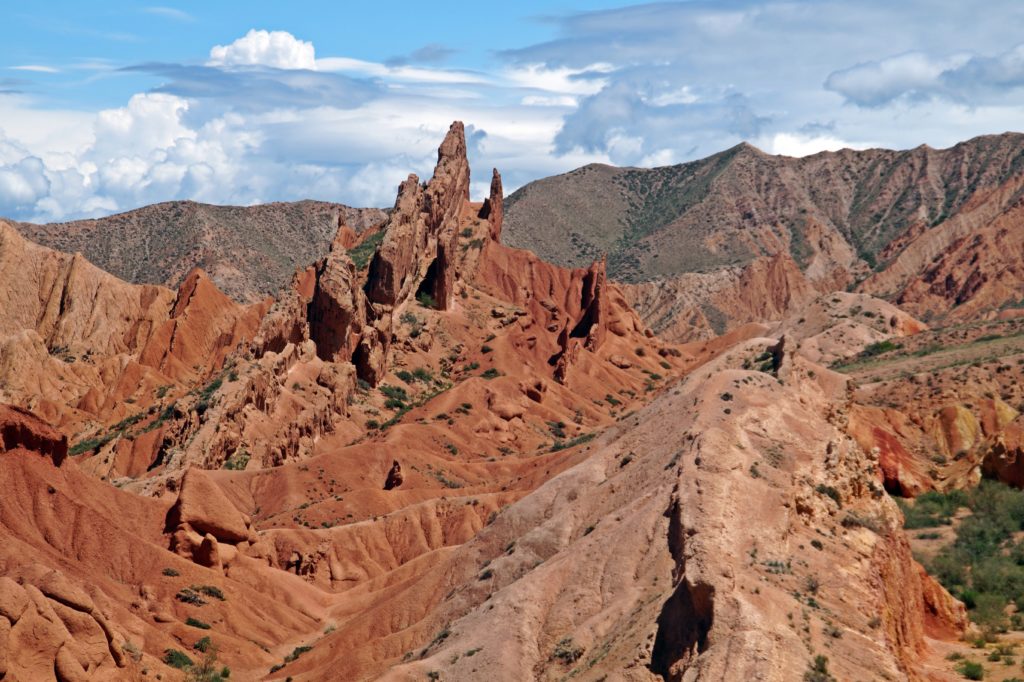
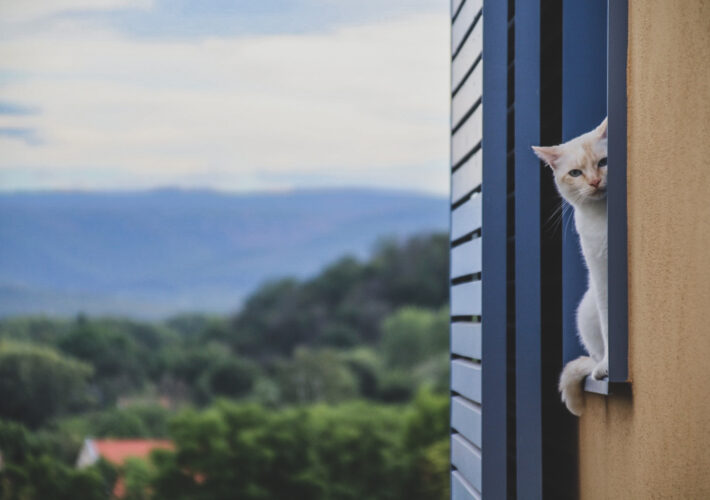
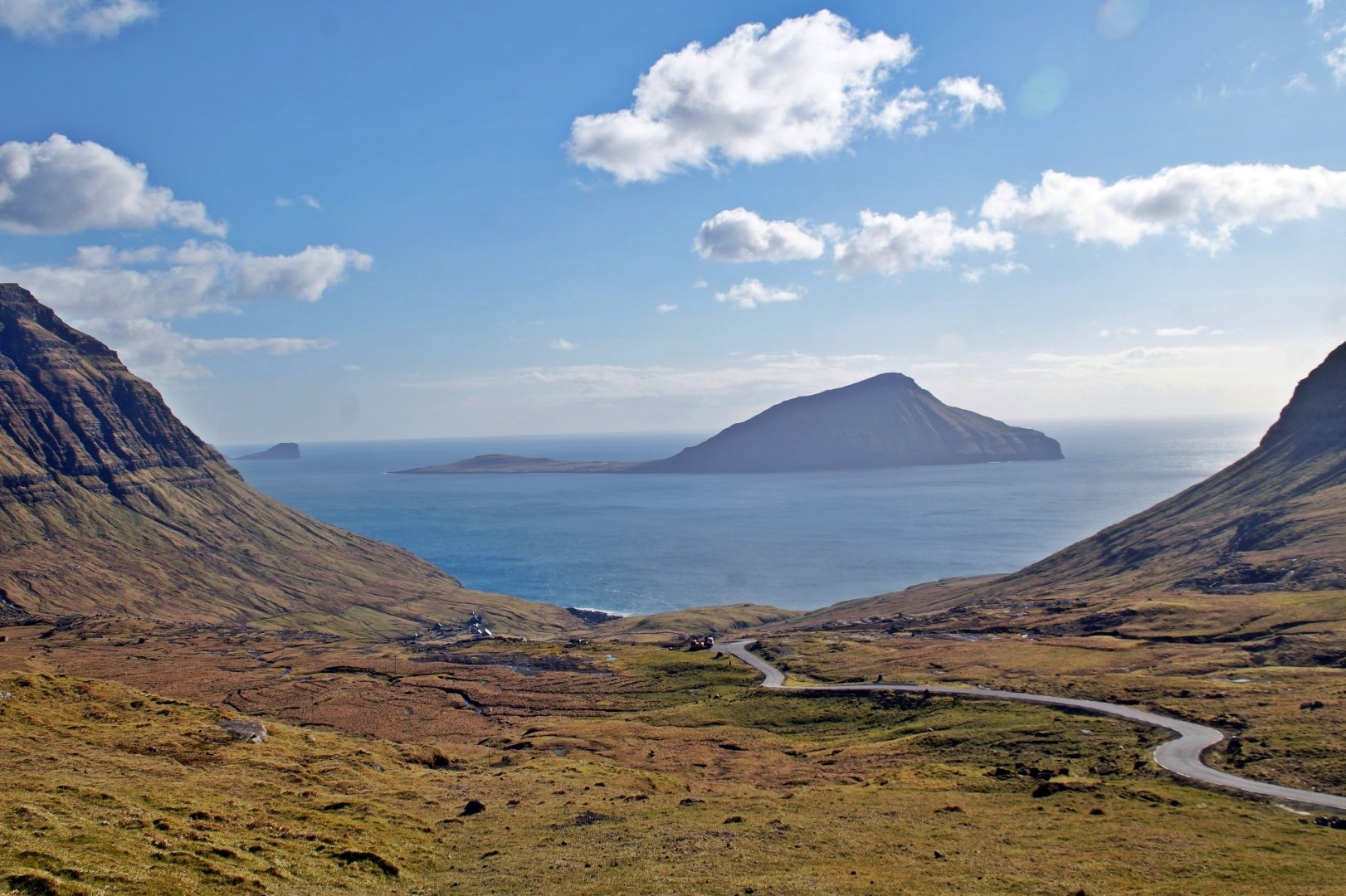
Leave a Comment